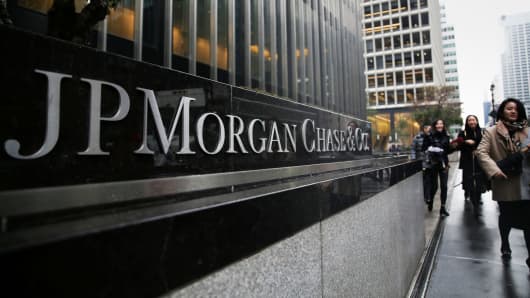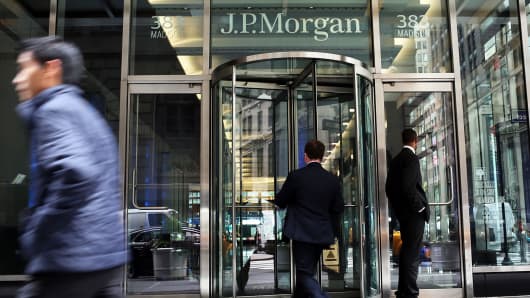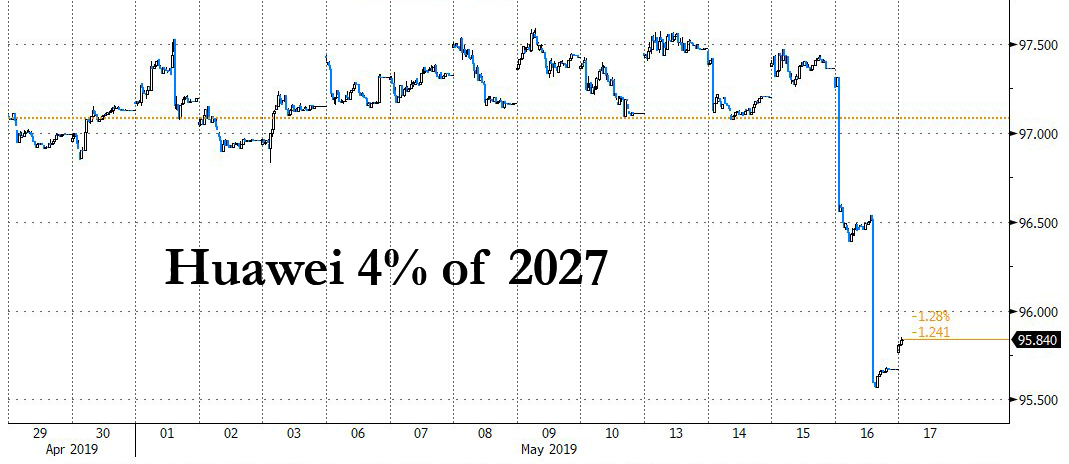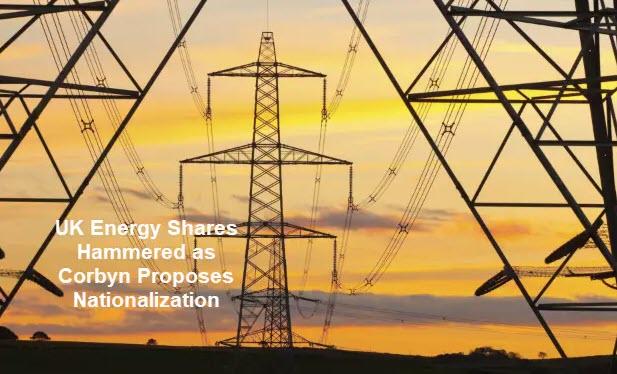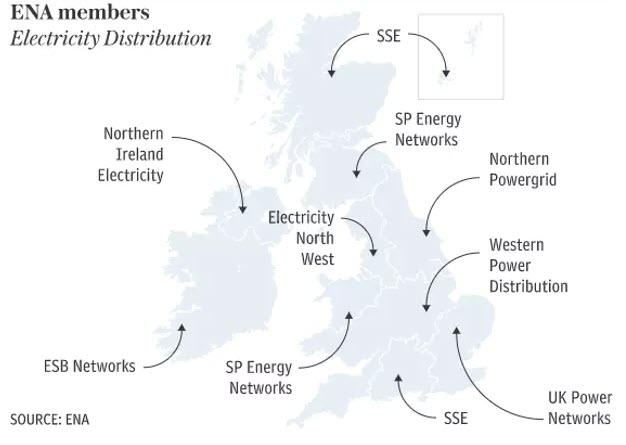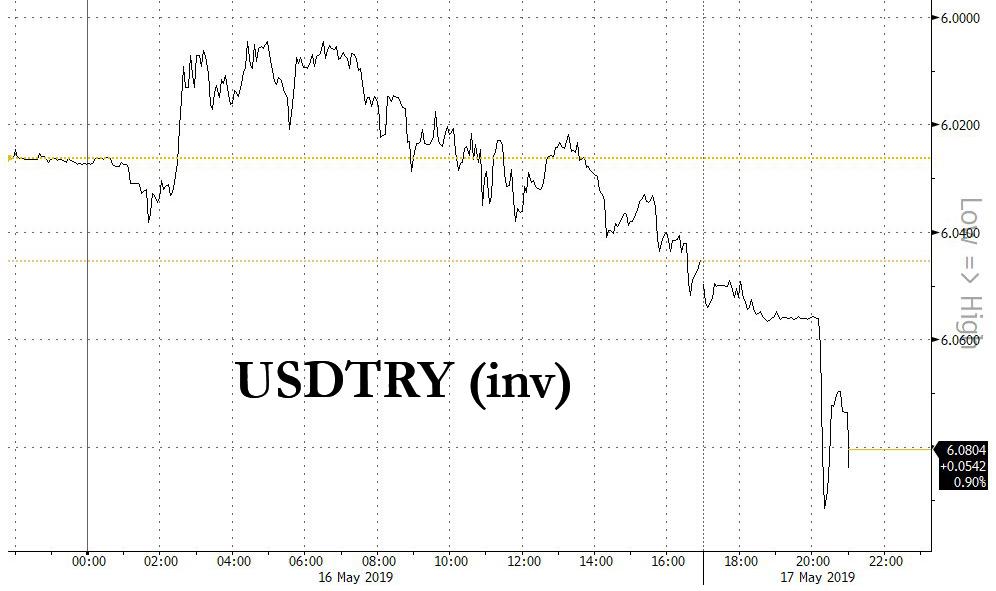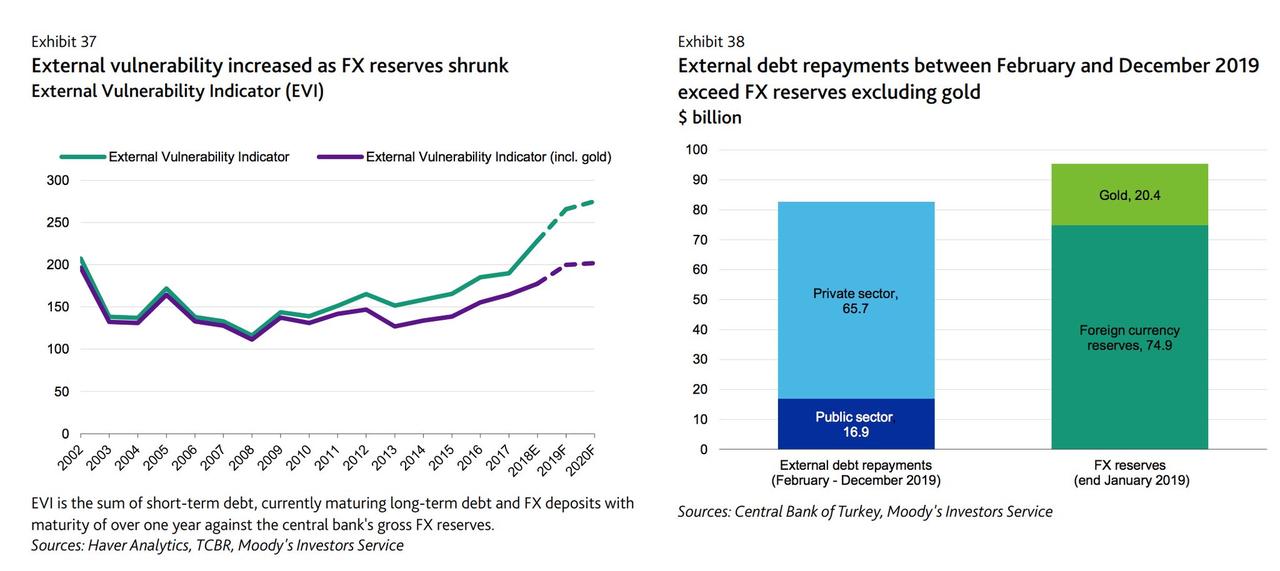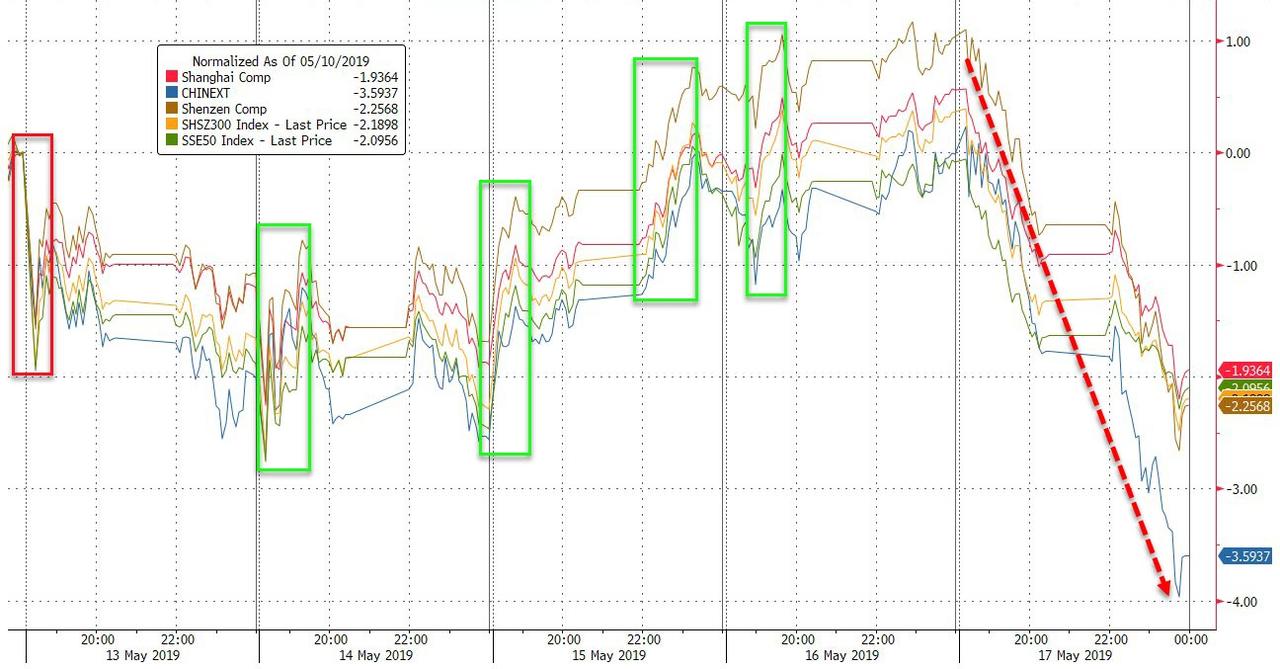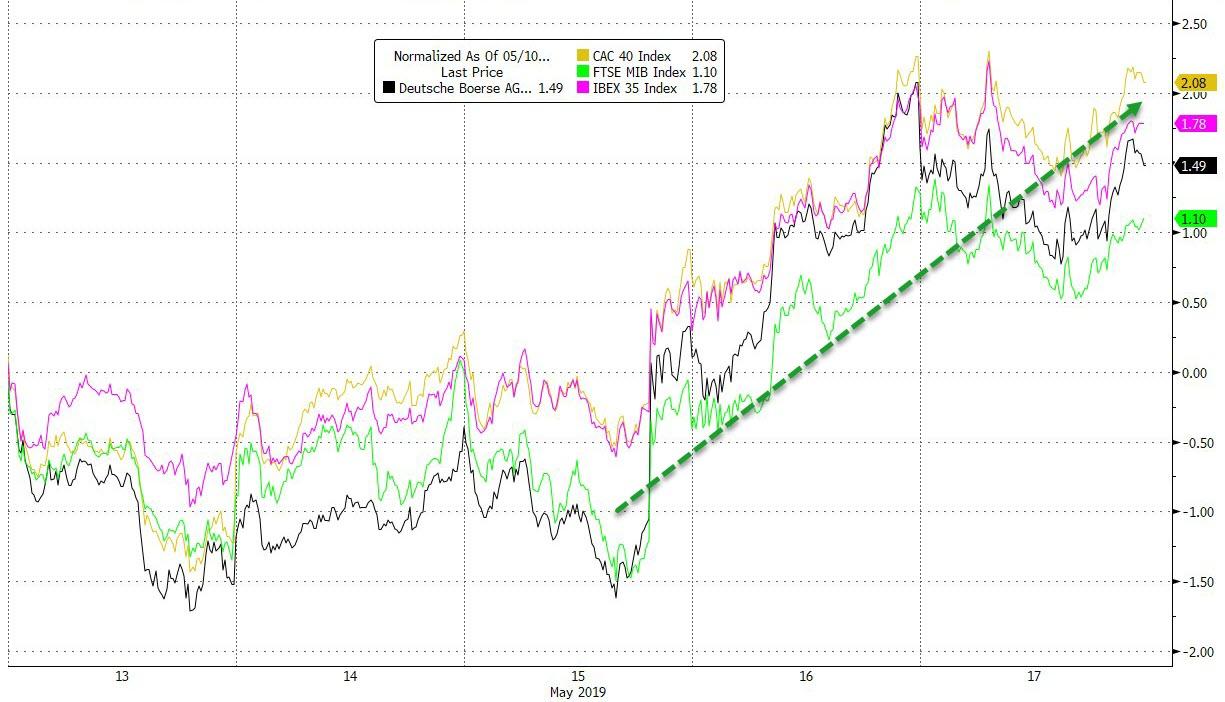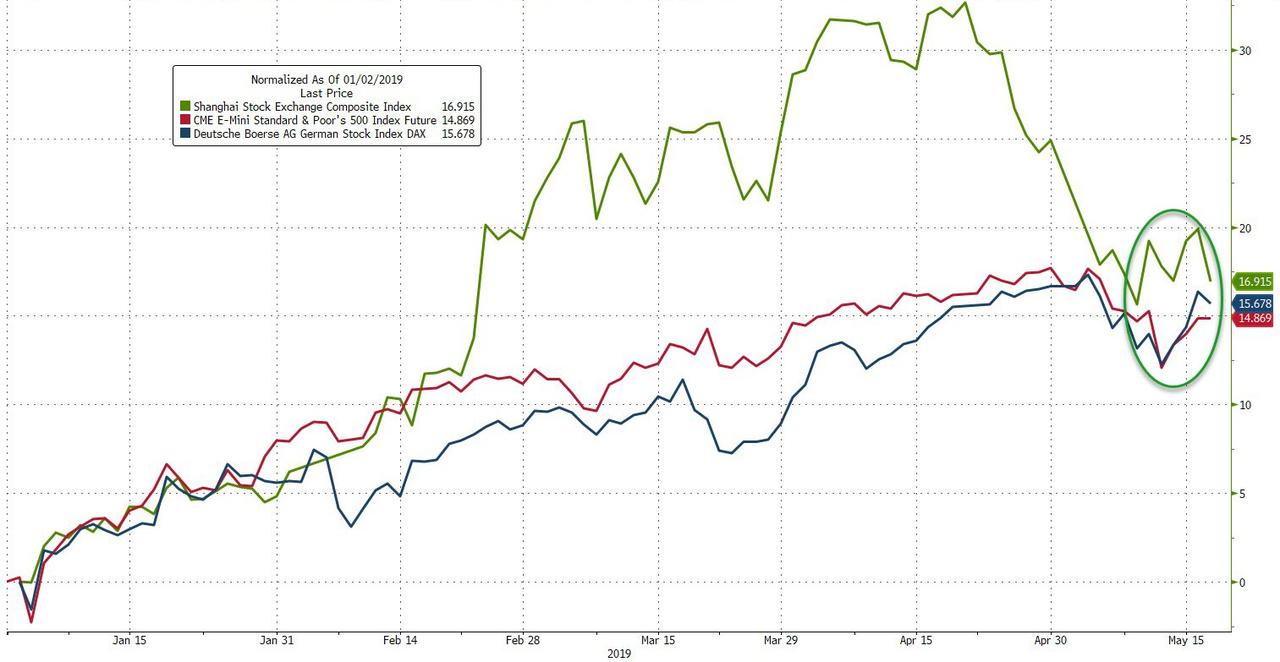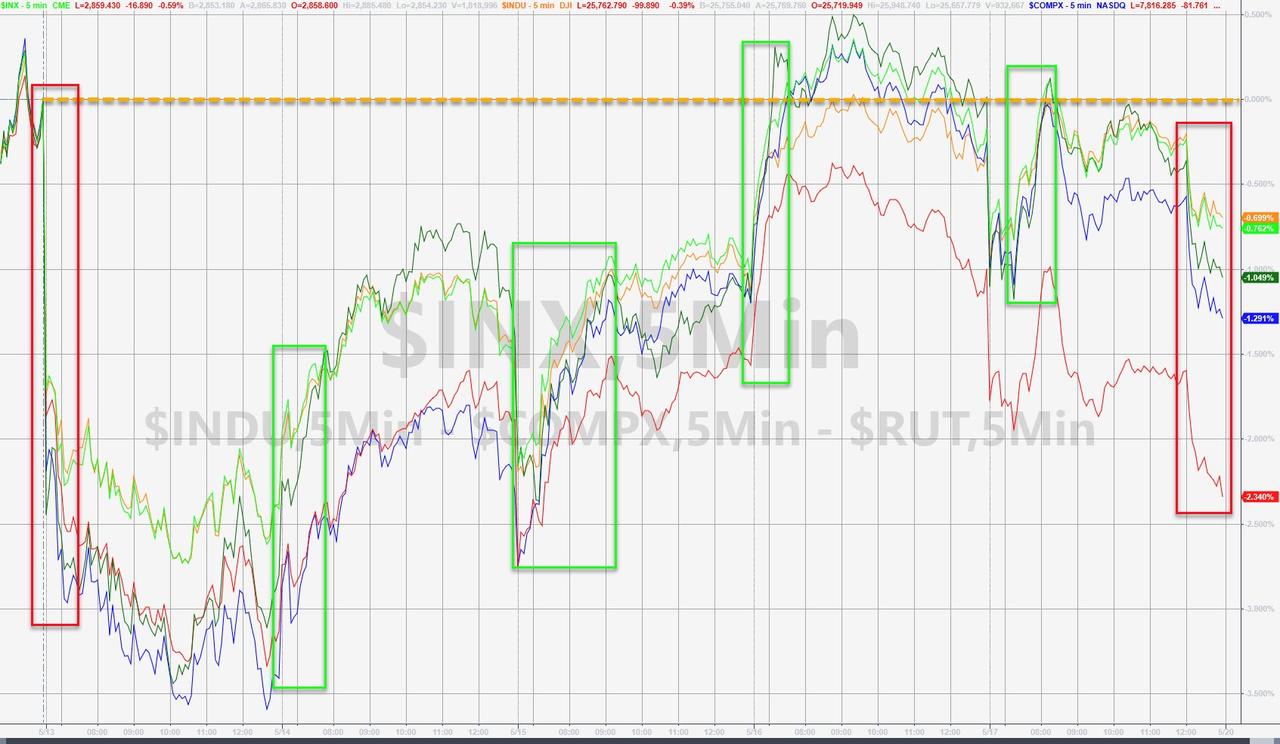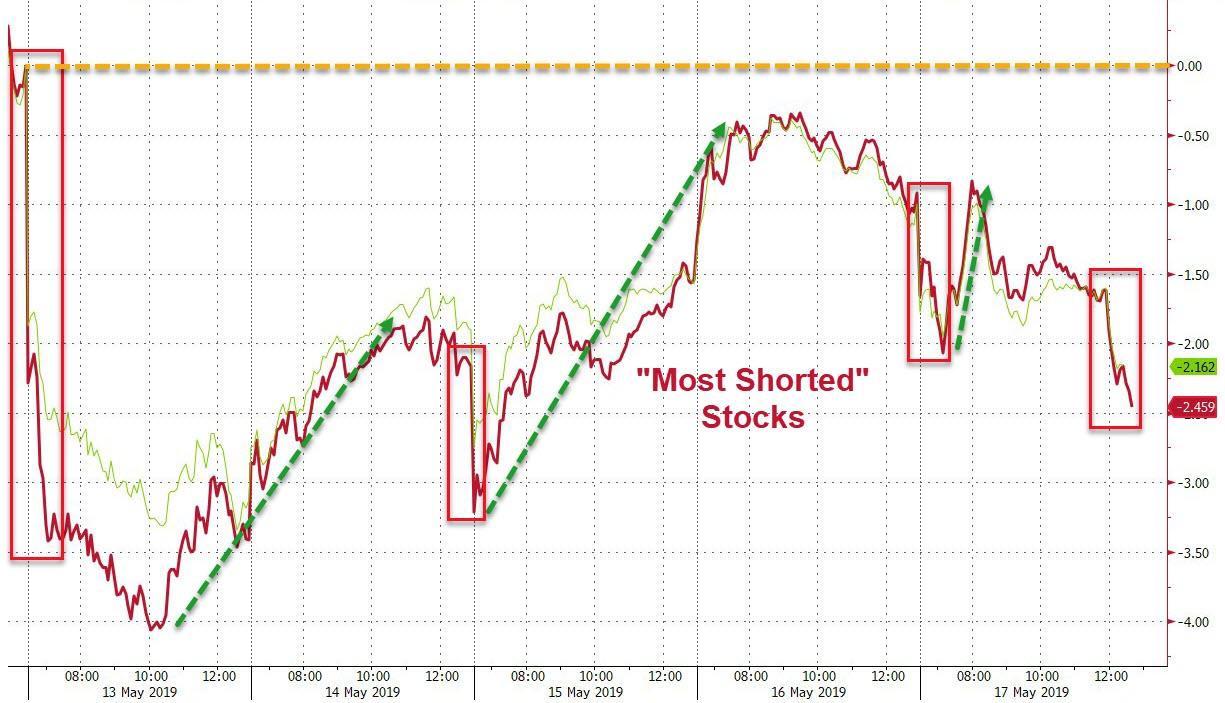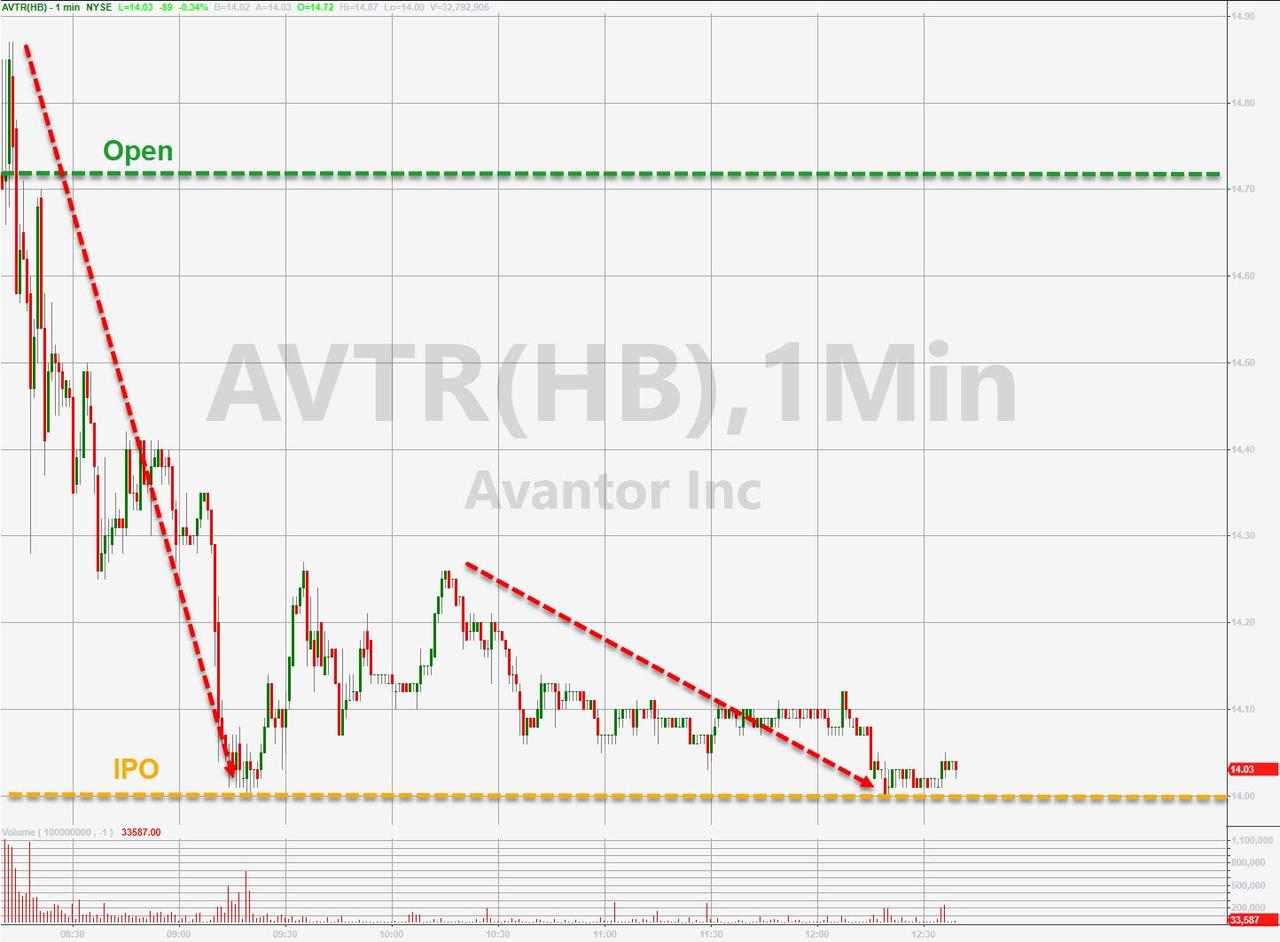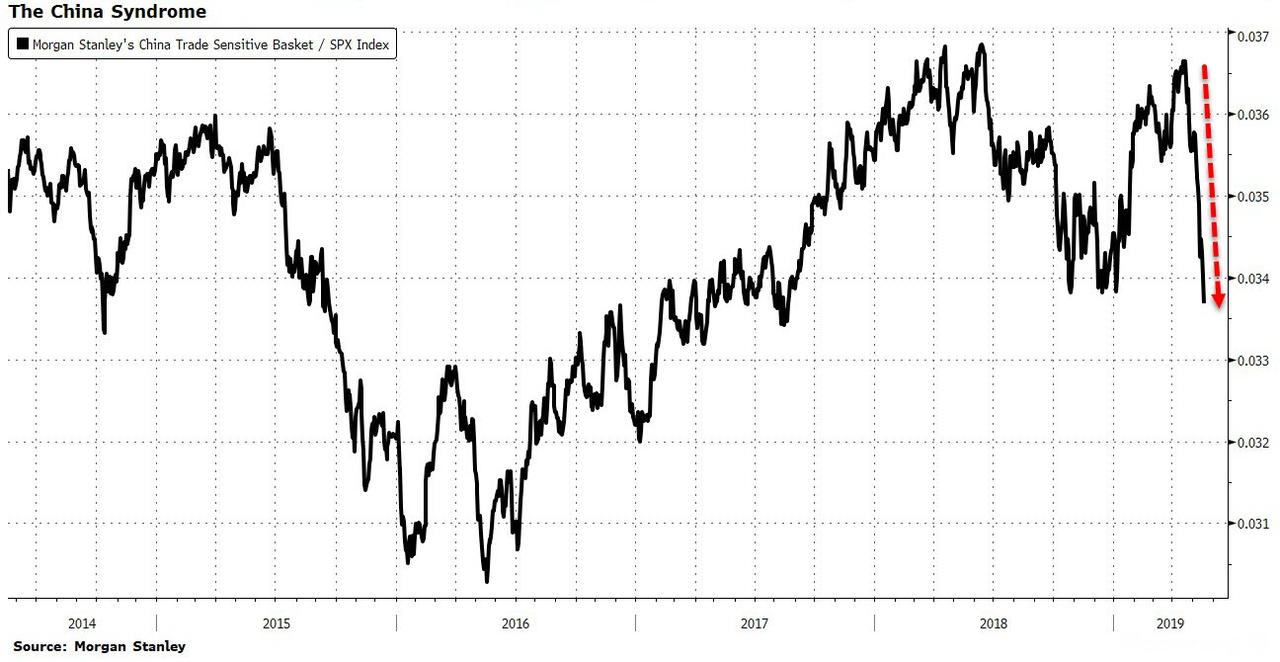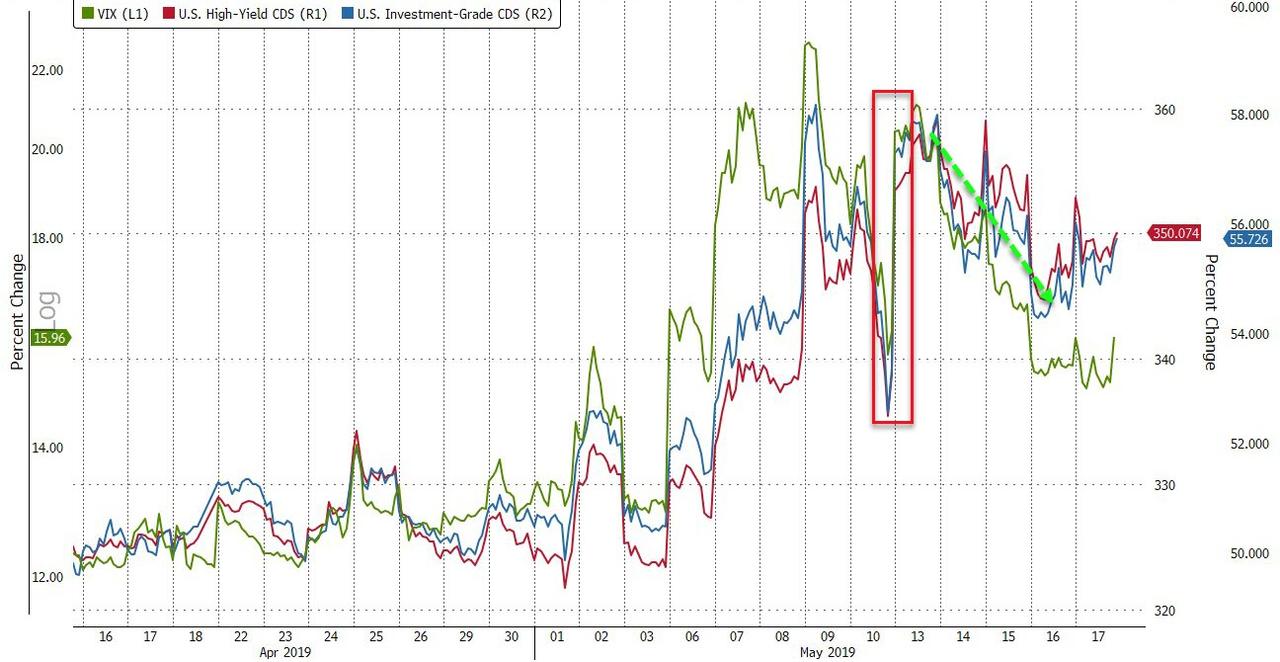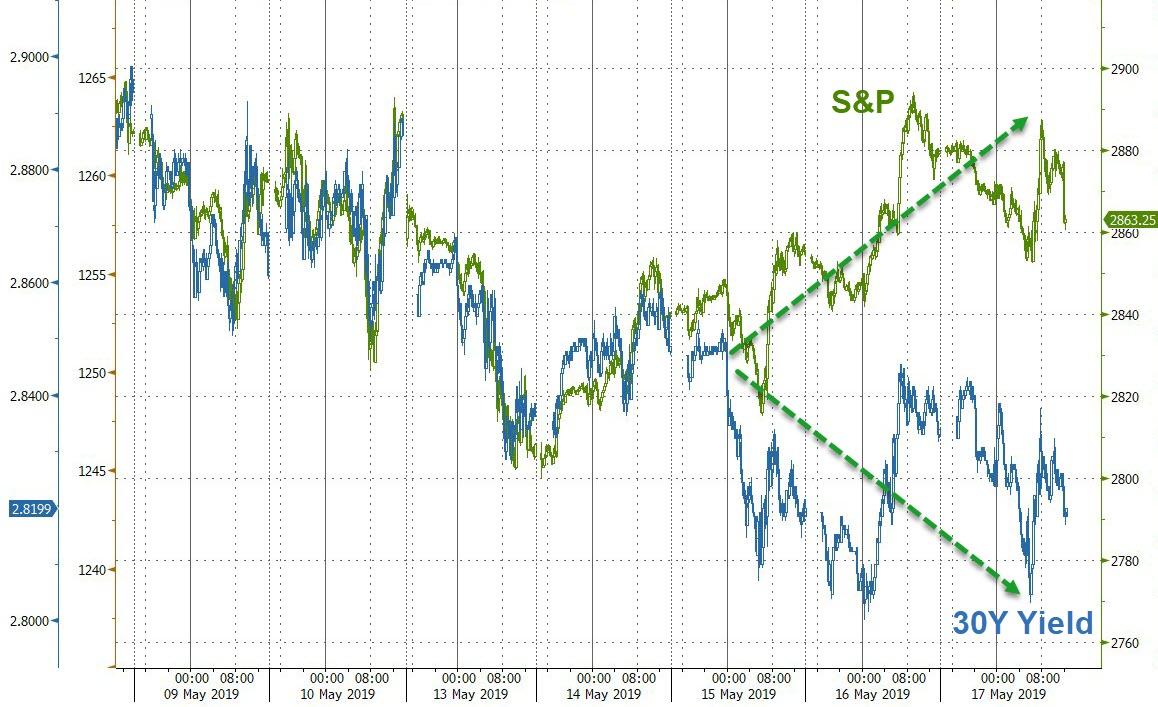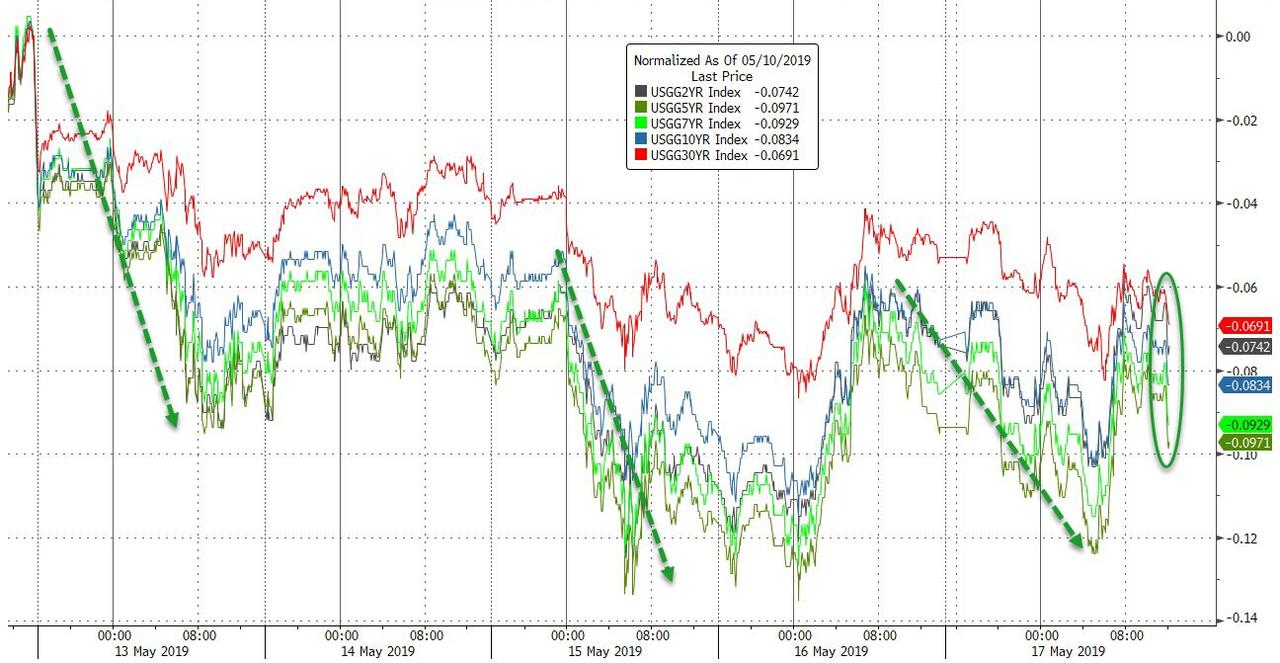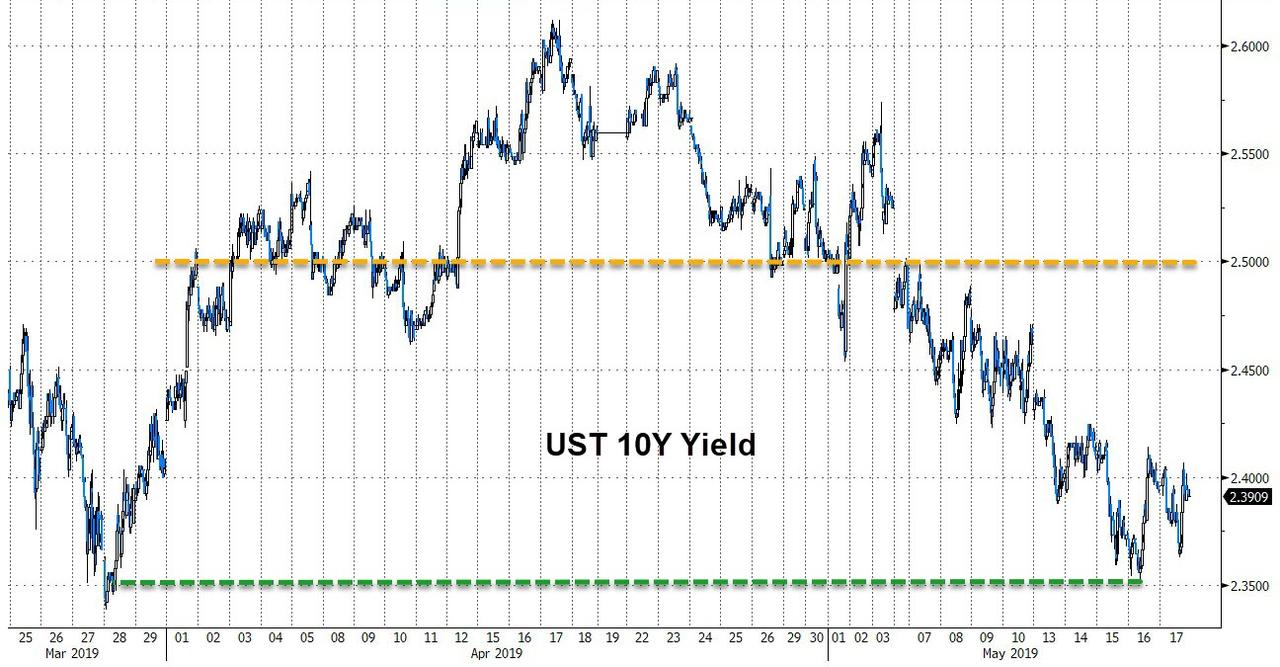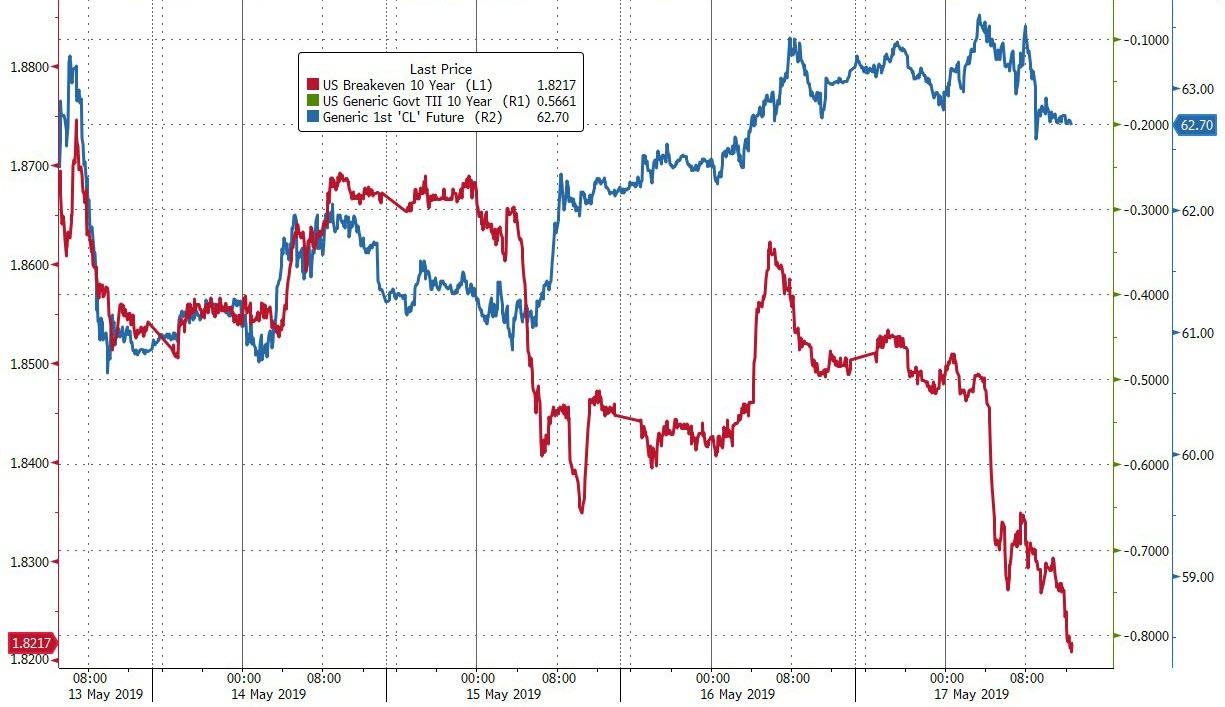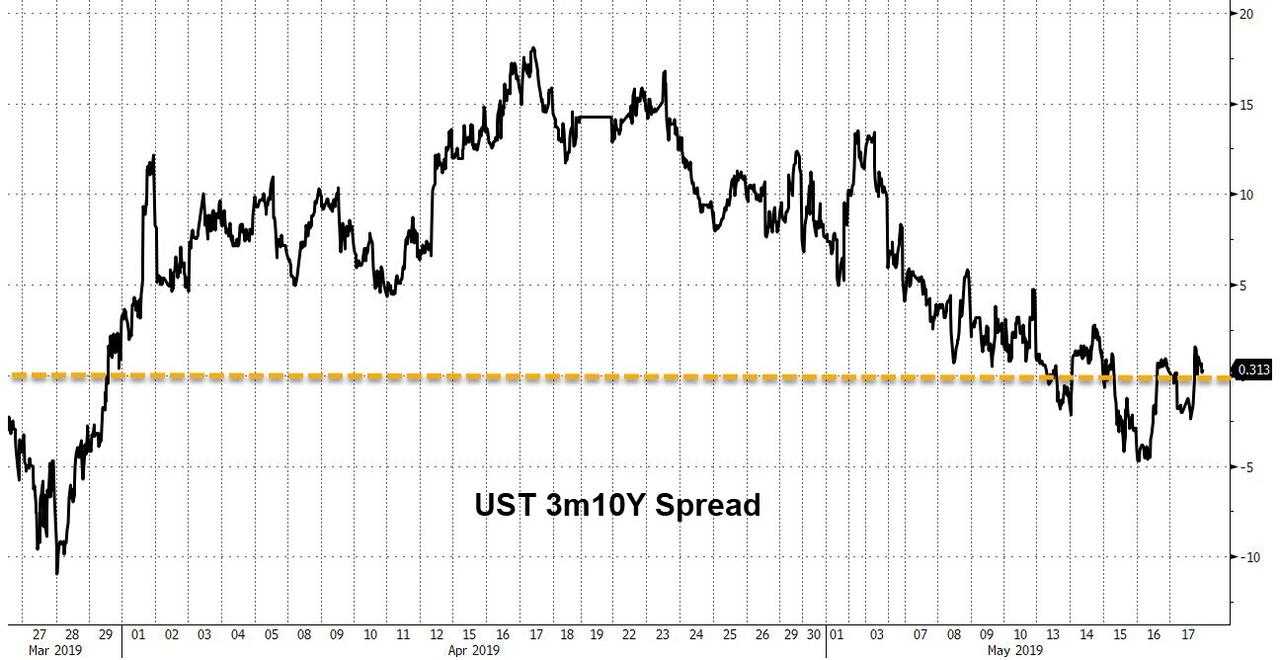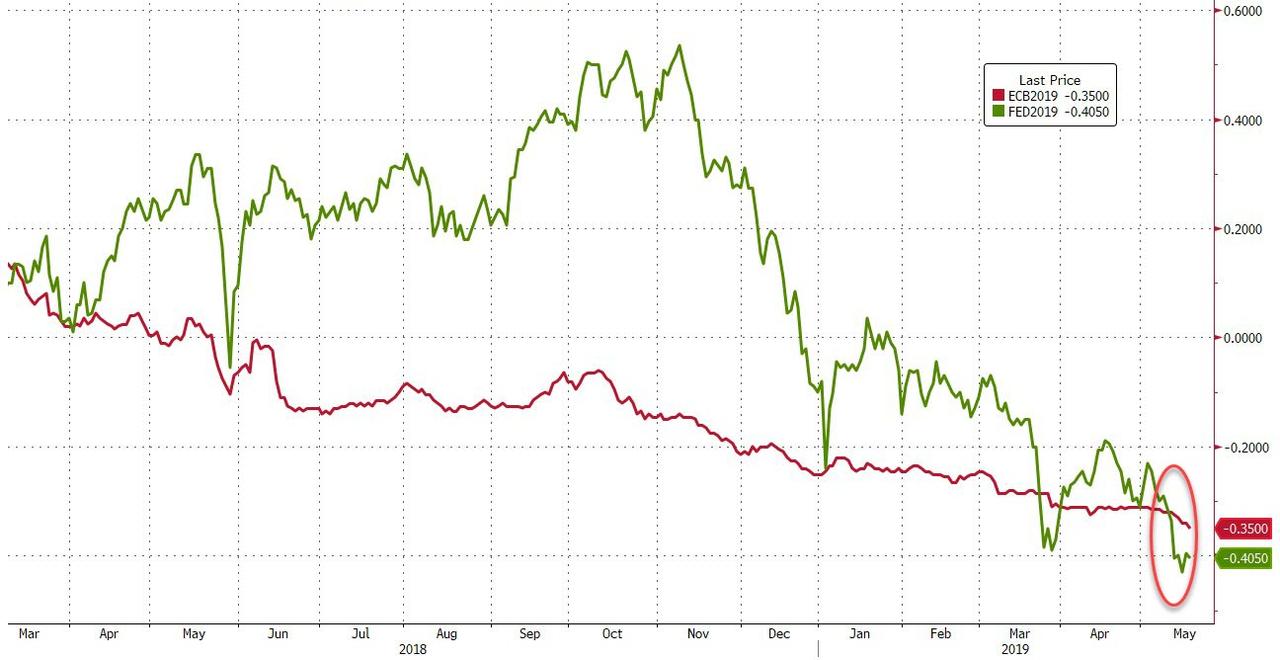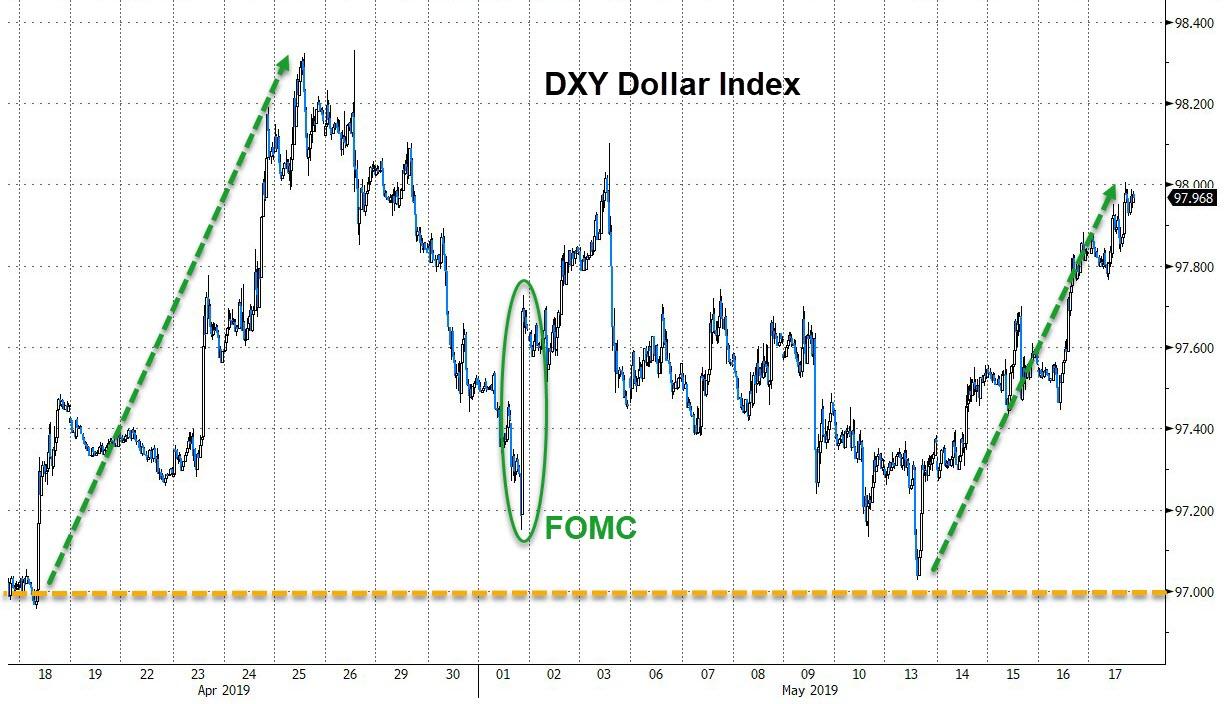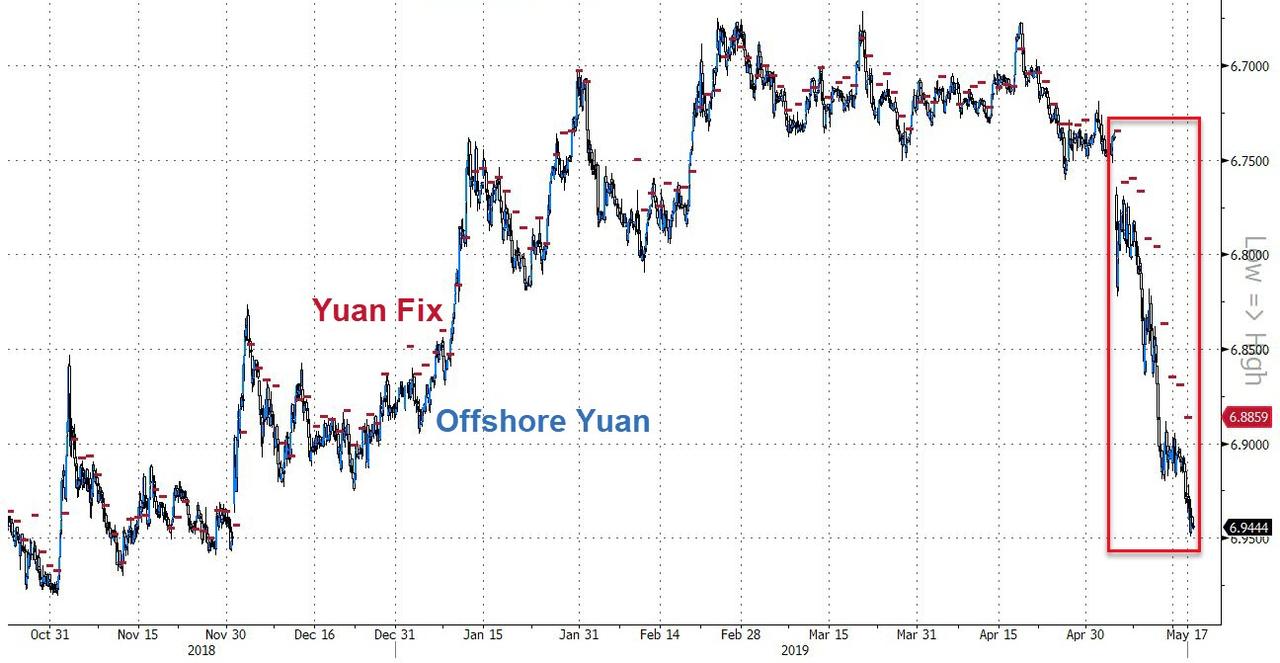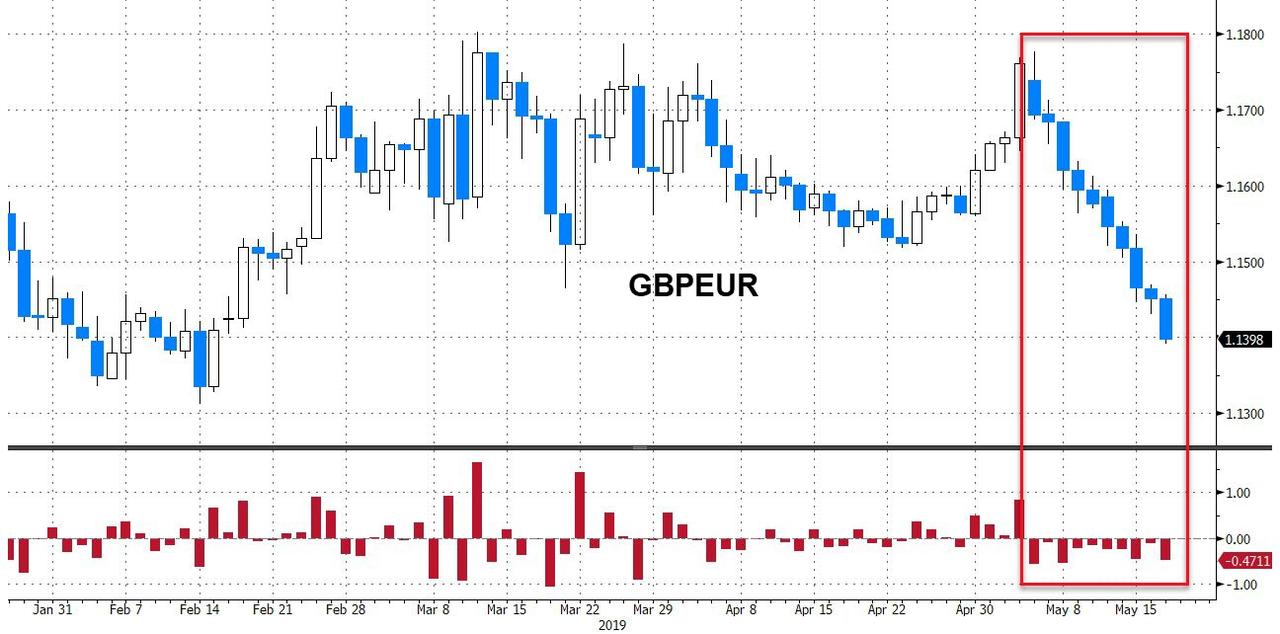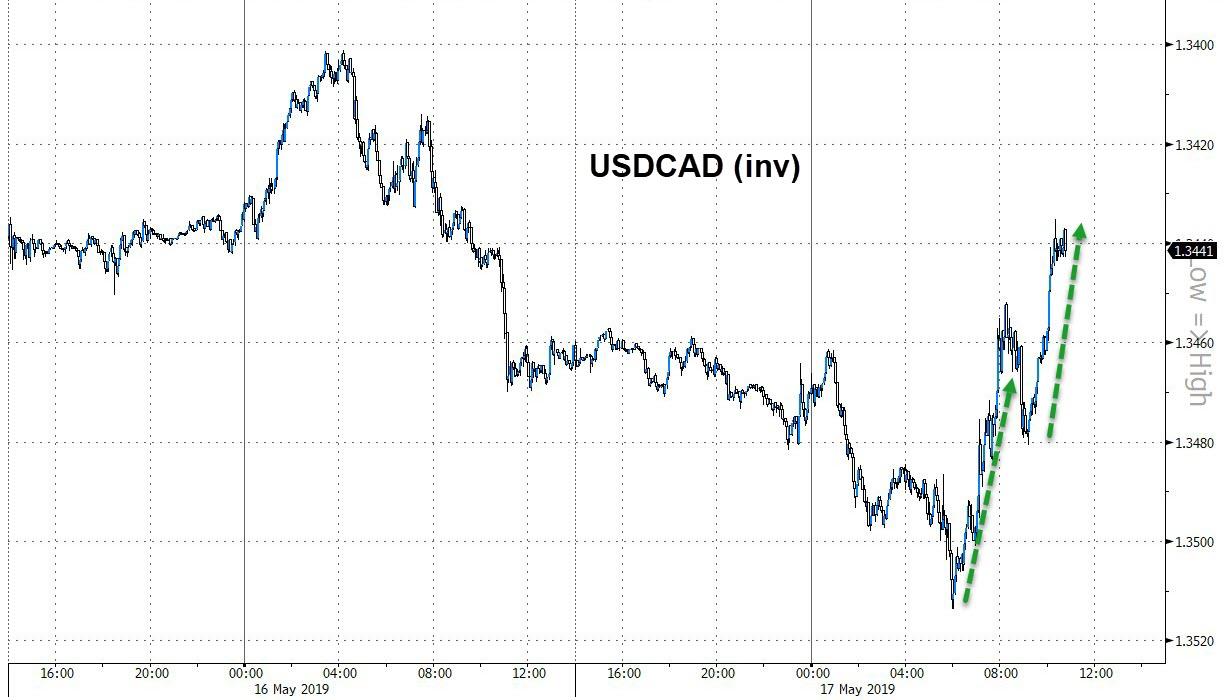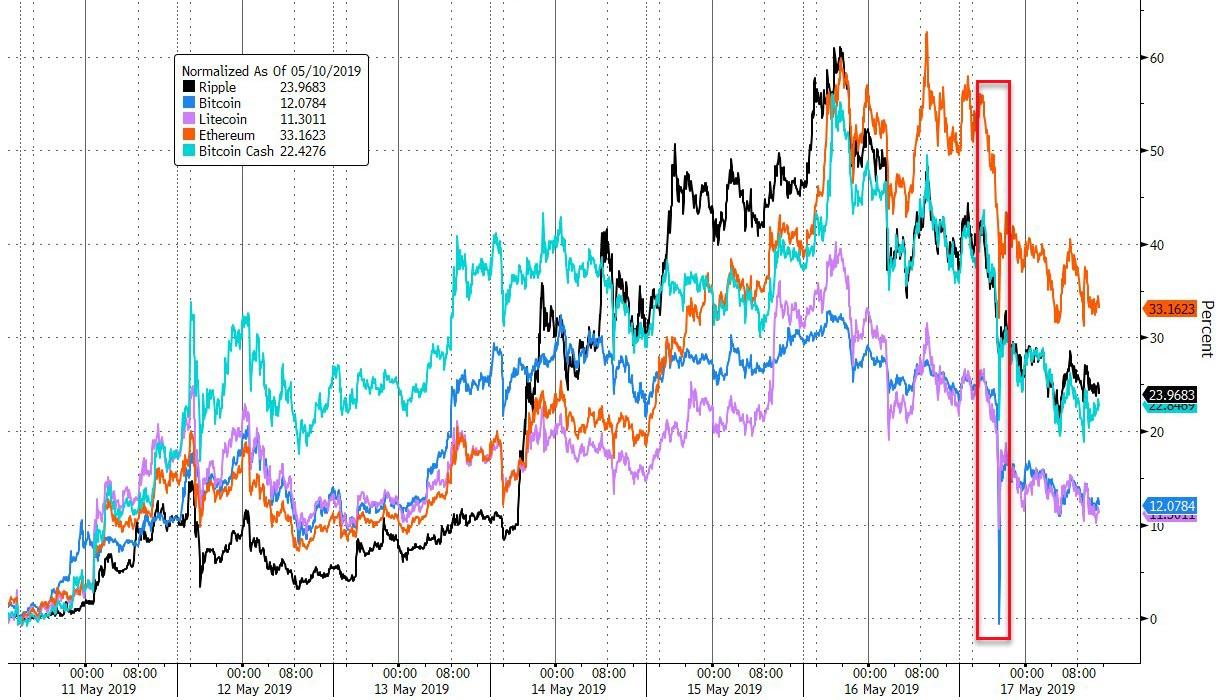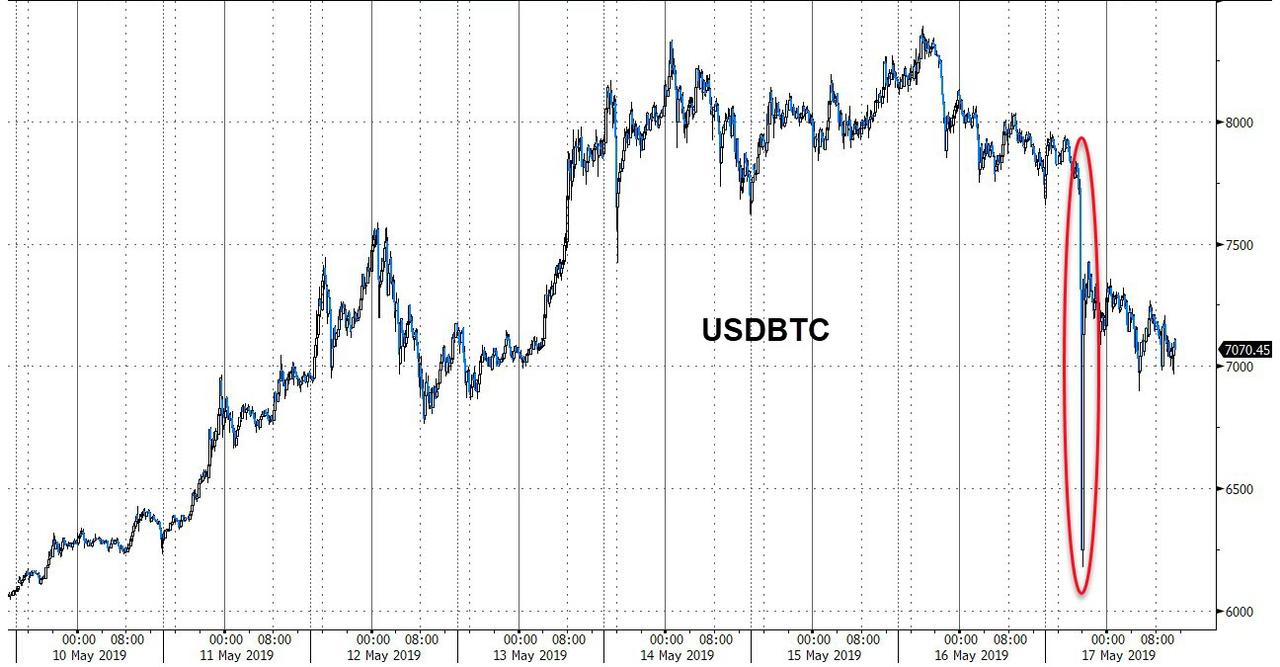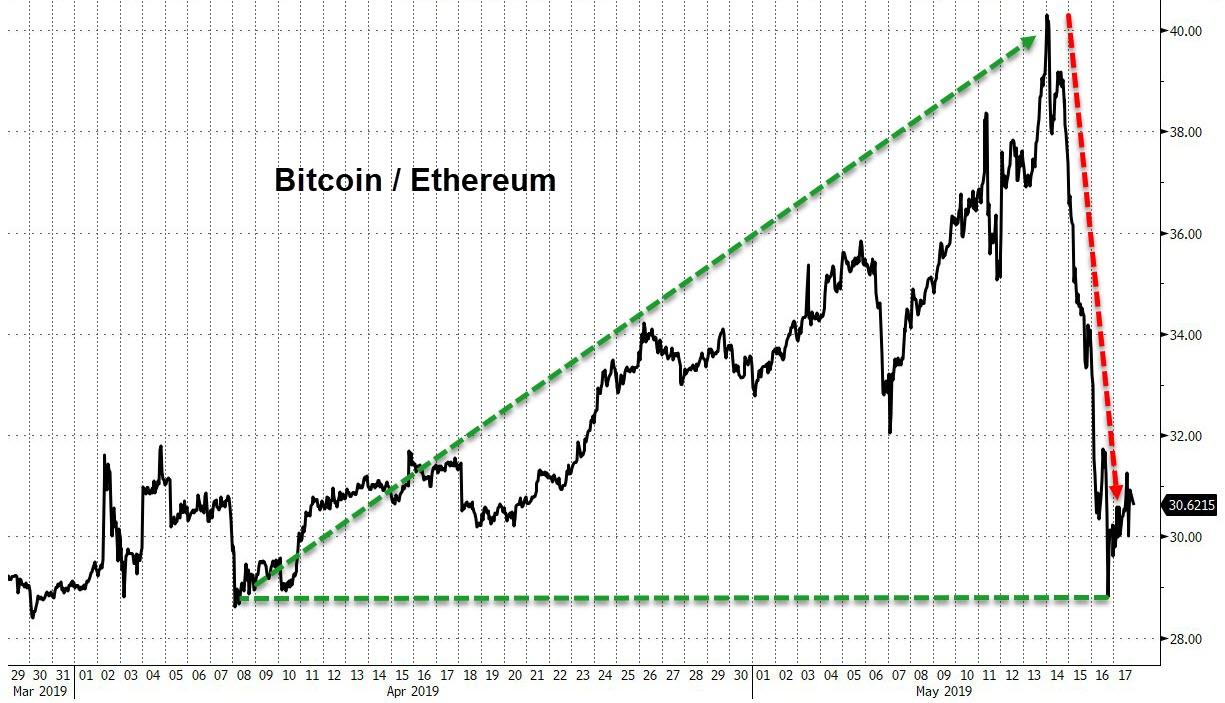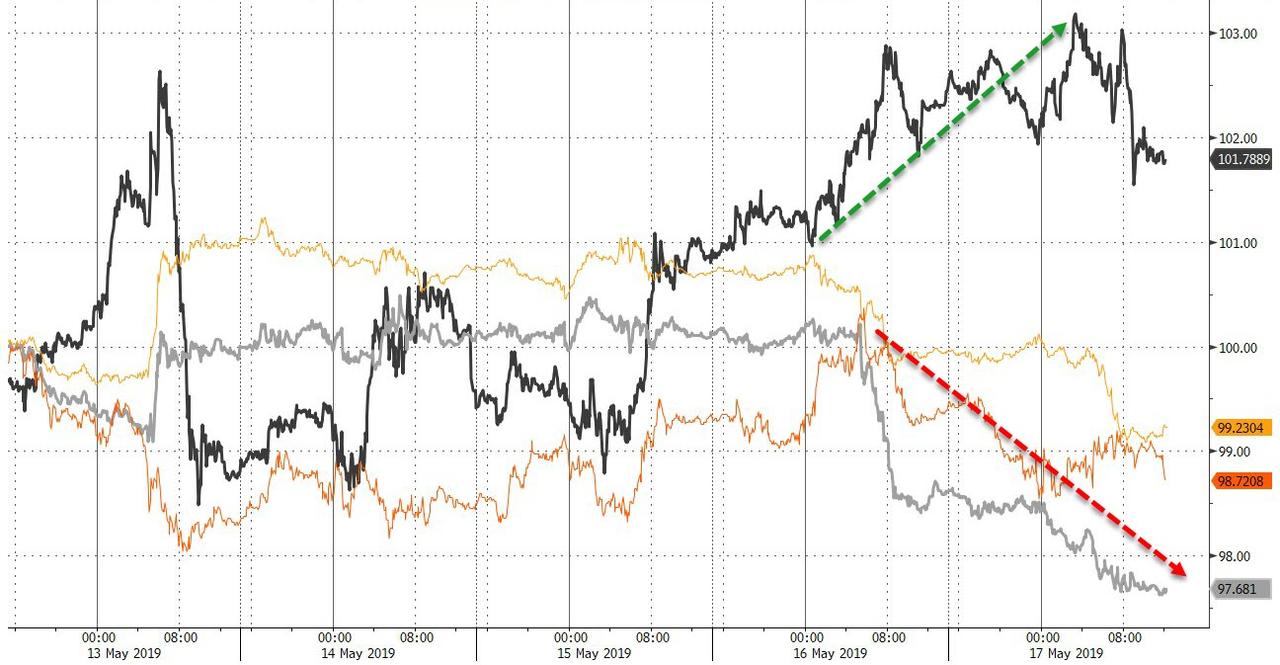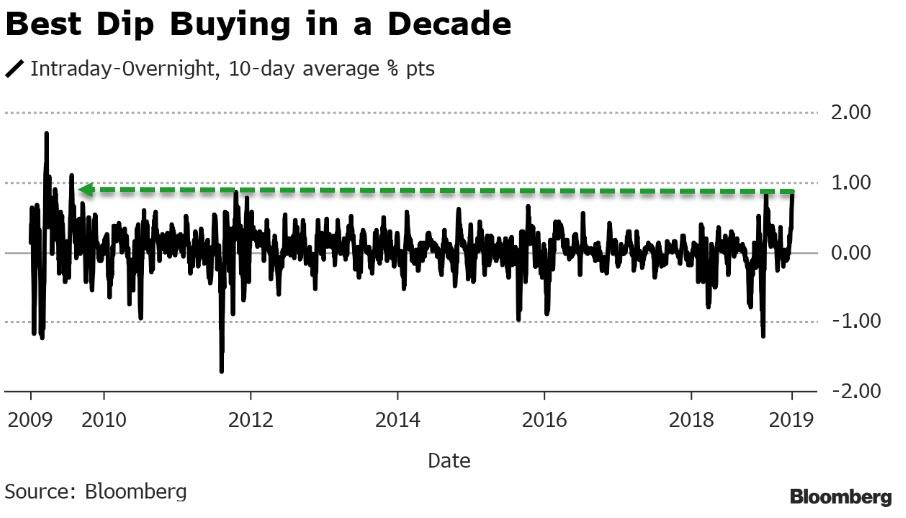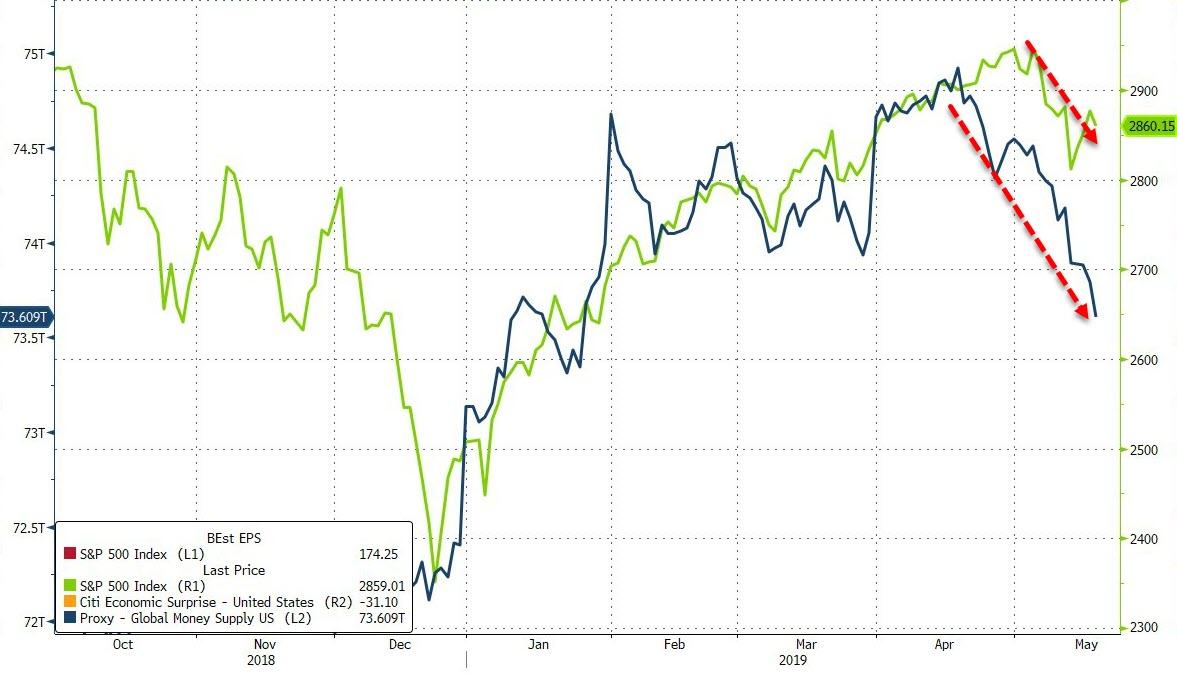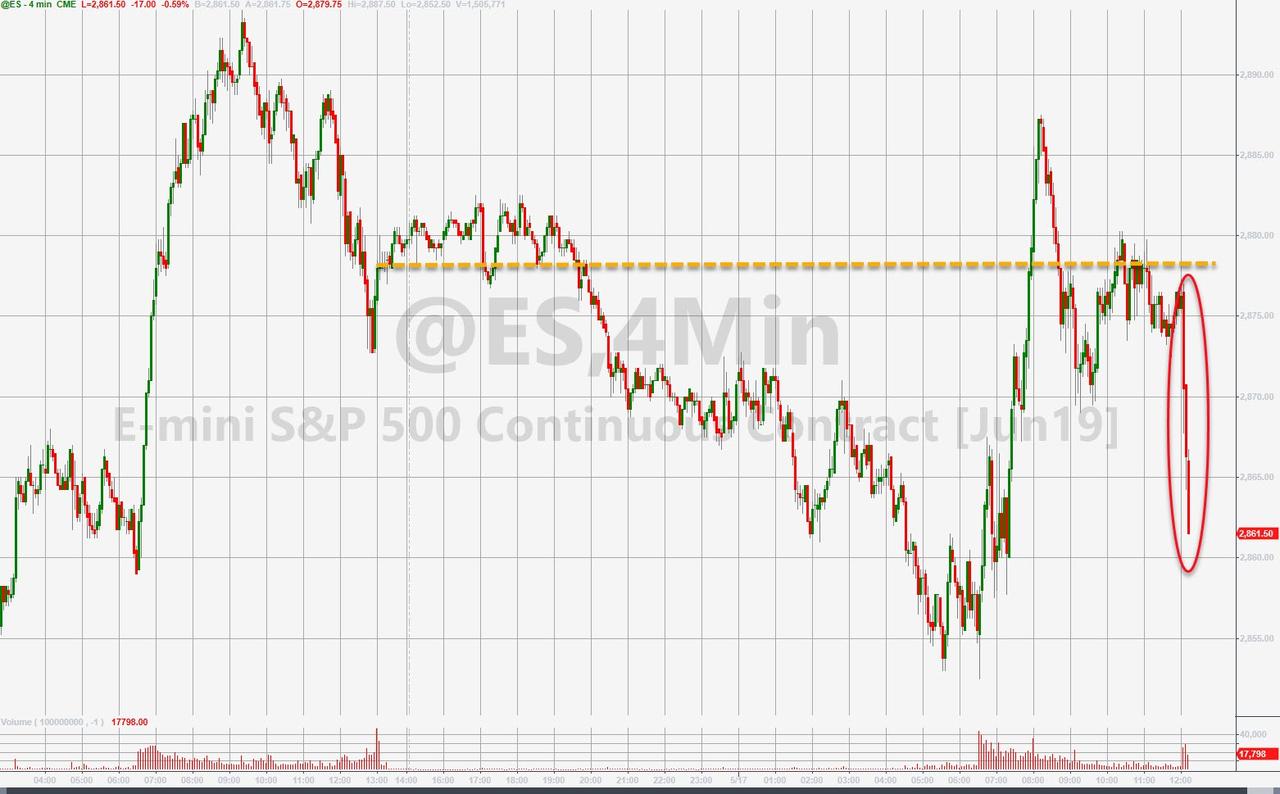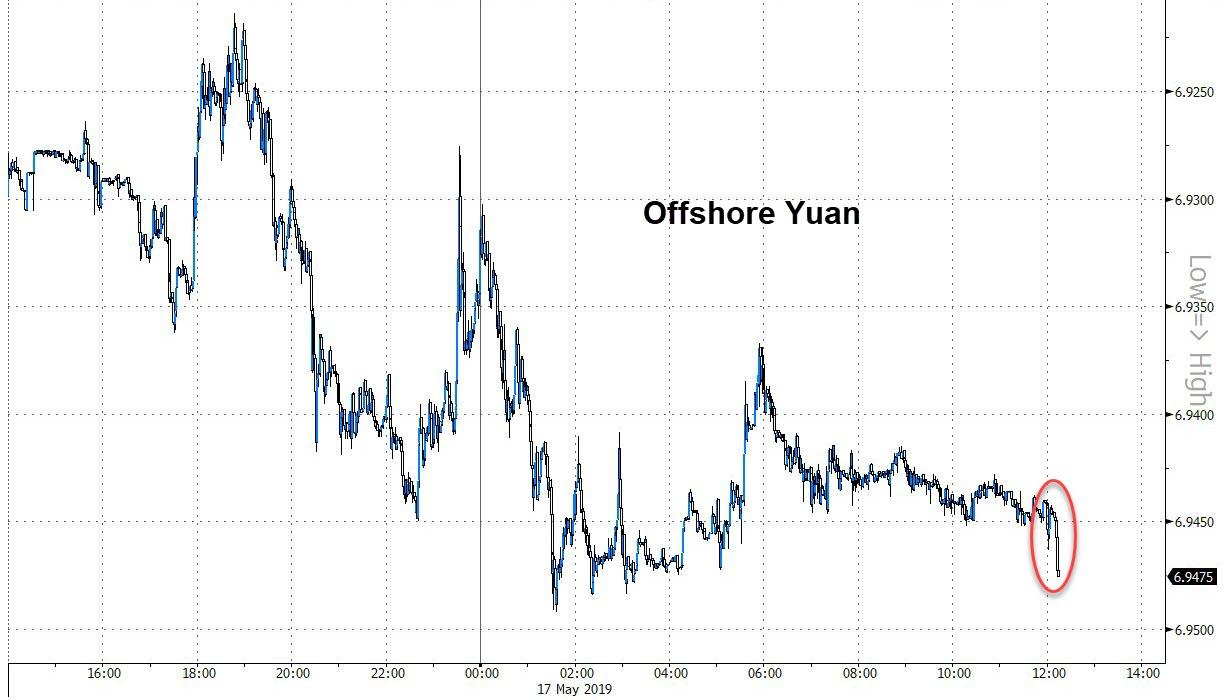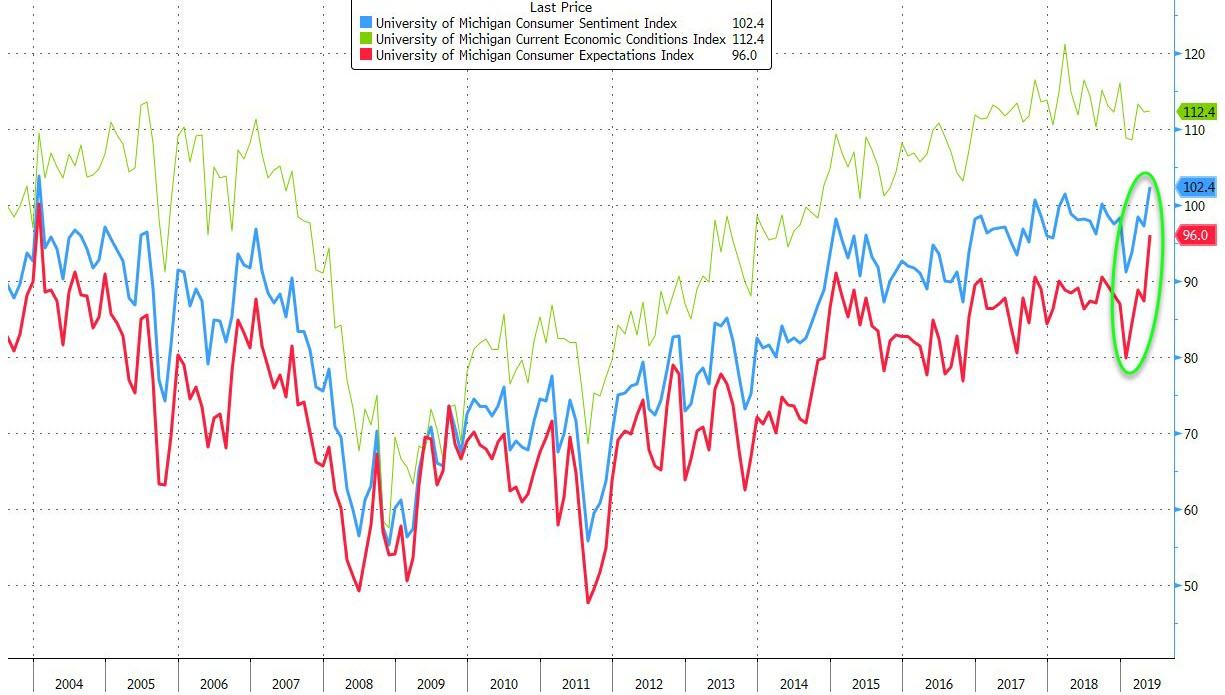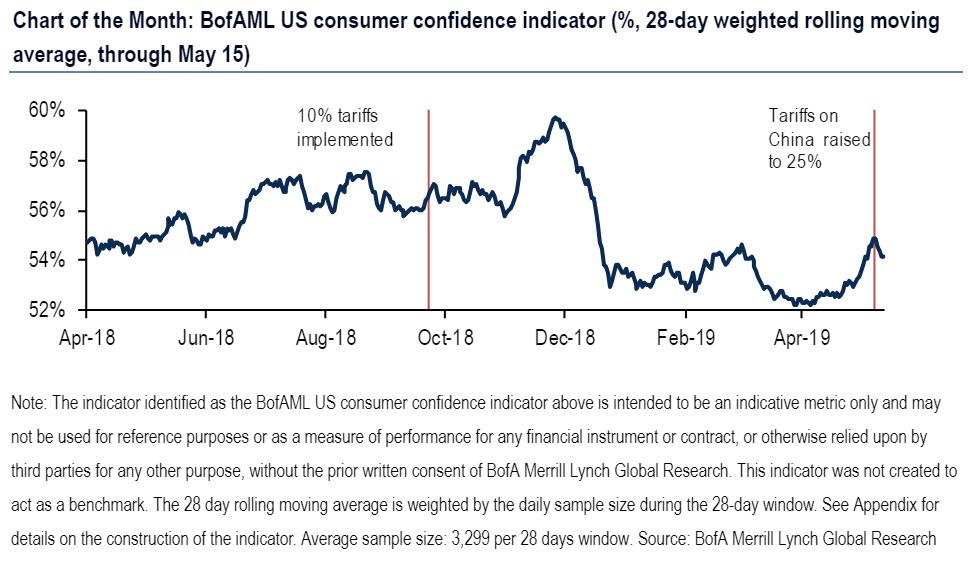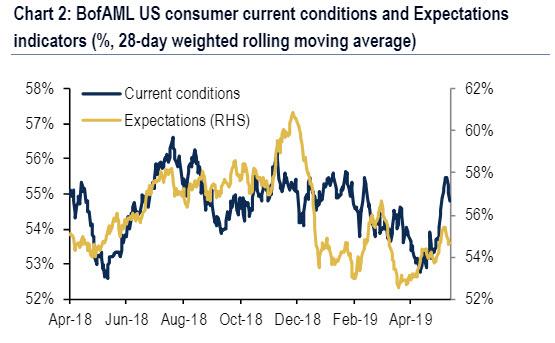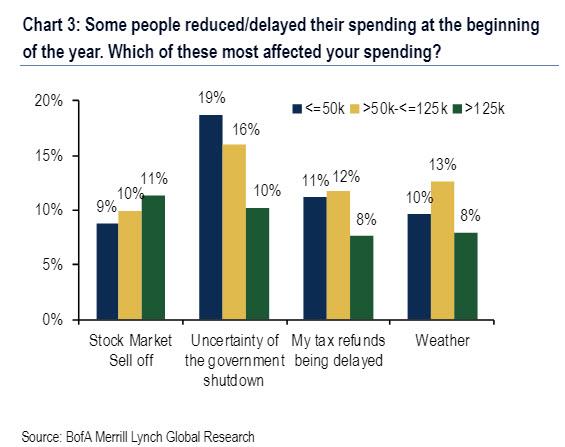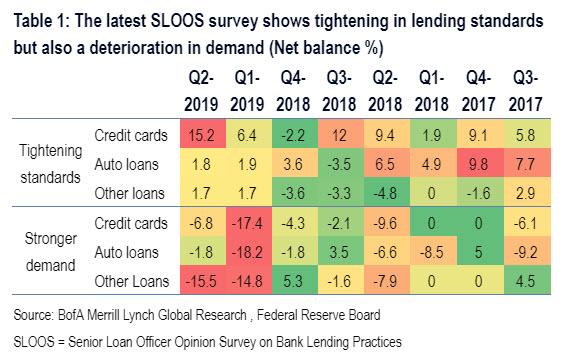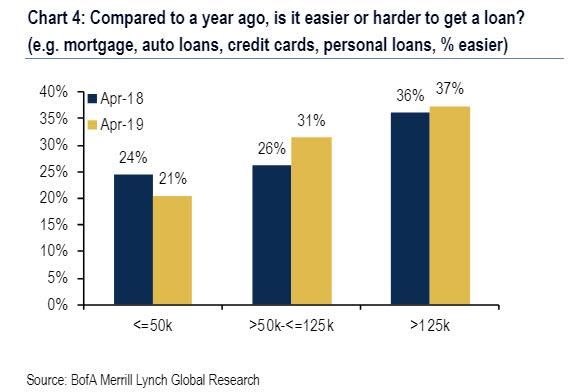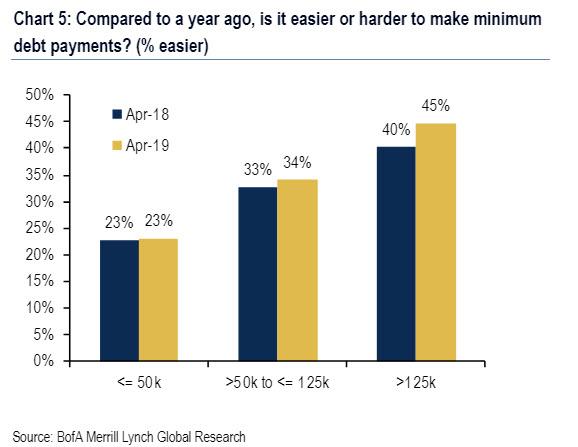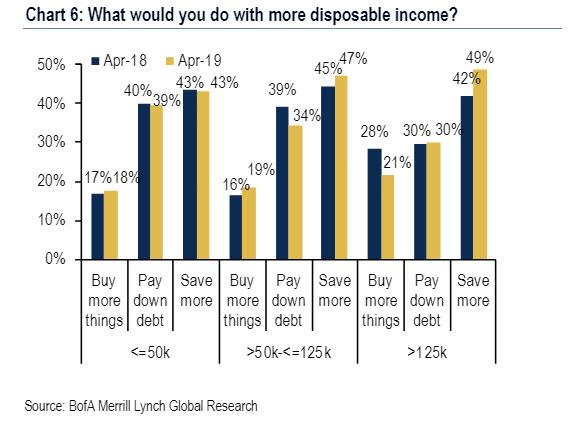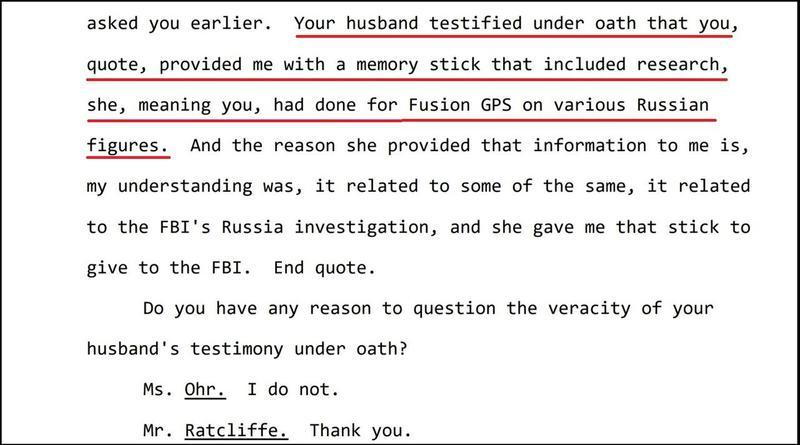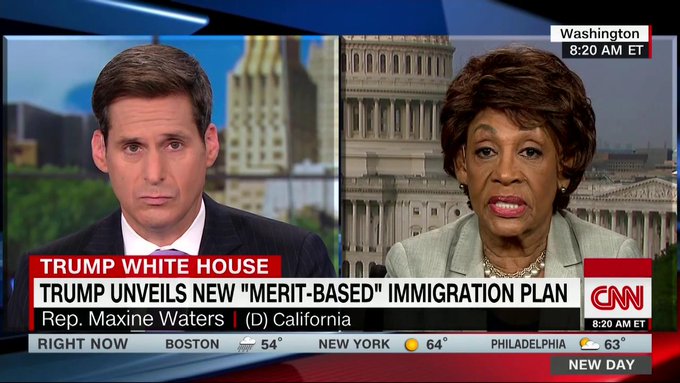GOLD: $1276.25 DOWN $9.70 (COMEX TO COMEX CLOSING)
Silver: $14.41 DOWN 13 CENTS (COMEX TO COMEX CLOSING)
Closing access prices:
Gold : 1277.70
silver: $14.42
OPTIONS EXPIRY FOR THE STOCK MARKET AND GLD/SLV WAS TODAY
COMEX EXPIRY FOR GOLD/SILVER: TUES MAY 28/2019
LBMA/OTC EXPIRY: MAY 31.2019
JPMorgan has been receiving gold with reckless abandon and sometimes supplying (stopping)
today RECEIVING 2/2
EXCHANGE: COMEX
CONTRACT: MAY 2019 COMEX 100 GOLD FUTURES
SETTLEMENT: 1,285.000000000 USD
INTENT DATE: 05/16/2019 DELIVERY DATE: 05/20/2019
FIRM ORG FIRM NAME ISSUED STOPPED
____________________________________________________________________________________________
661 C JP MORGAN 2
737 C ADVANTAGE 2
____________________________________________________________________________________________
TOTAL: 2 2
MONTH TO DATE: 290
NUMBER OF NOTICES FILED TODAY FOR MAY CONTRACT: 2 NOTICE(S) FOR 200 OZ (0.0062 tonnes)
TOTAL NUMBER OF NOTICES FILED SO FAR: 290 NOTICES FOR 28000 OZ (.9020 TONNES)
SILVER
FOR MAY
15 NOTICE(S) FILED TODAY FOR 75,000 OZ/
total number of notices filed so far this month: 3392 for 16,960,000 oz
XXXXXXXXXXXXXXXXXXXXXXXXXXXXXX
Bitcoin: OPENING MORNING TRADE :$7255 DOWN $632
Bitcoin: FINAL EVENING TRADE: $7104 DOWN $766
end
XXXX
Let us have a look at the data for today
xxxxxxxxxxxxxxxxxxxxxxxxxxxxxxxxxxxxxxxxxxxxxxxxxxxxxxxxxxxxxxxxxxxxxxxxxx
IN SILVER THE COMEX OI ROSE BY A MONSTROUS SIZED 5190 CONTRACTS FROM 204,318 UP TO 209,508 DESPITE YESTERDAY’S 26 CENT LOSS IN SILVER PRICING AT THE COMEX. LIQUIDATION OF THE SPREADERS HAVE STOPPED FOR SILVER BUT IT NOW IN FULL FORCE FOR GOLD. TODAY WE ARRIVED CLOSER TO AUGUST’S 2018 RECORD SETTING OPEN INTEREST OF 244,196 CONTRACTS.
WE HAVE ALSO WITNESSED A LARGE AMOUNT OF PHYSICAL METAL STAND FOR COMEX DELIVERY AS WELL WE ARE WITNESSING CONSIDERABLE LONGS PACKING THEIR BAGS AND MIGRATING OVER TO LONDON IN GREATER NUMBERS IN THE FORM OF EFP’S. WE WERE NOTIFIED THAT WE HAD A STRONG SIZED NUMBER OF COMEX LONGS TRANSFERRING THEIR CONTRACTS TO LONDON THROUGH THE EFP:
0 FOR MAY, 0 FOR JUNE, 1368 FOR JULY AND ZERO FOR ALL OTHER MONTHS AND THEREFORE TOTAL ISSUANCE 1368 CONTRACTS. WITH THE TRANSFER OF 1368 CONTRACTS, WHAT THE CME IS STATING IS THAT THERE IS NO SILVER (OR GOLD) TO BE DELIVERED UPON AT THE COMEX AS THEY MUST EXPORT THEIR OBLIGATION TO LONDON. ALSO KEEP IN MIND THAT THERE CAN BE A DELAY OF 24-48 HRS IN THE ISSUING OF EFP’S. THE 1368 EFP CONTRACTS TRANSLATES INTO 6.84 MILLION OZ ACCOMPANYING:
1.THE 26 CENT LOSS IN SILVER PRICE AT THE COMEX AND
2. THE STRONG AMOUNT OF SILVER OUNCES WHICH STOOD FOR DELIVERY IN THE LAST NINE MONTHS:
JUNE/2018. (5.420 MILLION OZ);
FOR JULY: 30.370 MILLION OZ
FOR AUG., 6.065 MILLION OZ
FOR SEPT. 39.505 MILLION OZ S
FOR OCT.2.525 MILLION OZ.
FOR NOV: A HUGE 7.440 MILLION OZ STANDING AND
21.925 MILLION OZ FINALLY STAND FOR DECEMBER.
5.845 MILLION OZ STAND IN JANUARY.
2.955 MILLION OZ STANDING FOR FEBRUARY.:
27.120 MILLION OZ STANDING IN MARCH.
3.875 MILLION OZ STANDING FOR SILVER IN APRIL.
AND NOW 18.650 MILLION OZ STANDING FOR SILVER IN MAY.
ACCUMULATION FOR EFP’S/SILVER/J.P.MORGAN’S HOUSE OF BRIBES, / STARTING FROM FIRST DAY NOTICE/FOR MONTH OF MAY:
14,934 CONTRACTS (FOR 13 TRADING DAYS TOTAL 14,934 CONTRACTS) OR 74,67 MILLION OZ: (AVERAGE PER DAY: 1148 CONTRACTS OR 5.743 MILLION OZ/DAY)
TO GIVE YOU AN IDEA AS TO THE HUGE SUPPLY THIS MONTH IN SILVER: SO FAR THIS MONTH OF MAY: 74.67 MILLION PAPER OZ HAVE MORPHED OVER TO LONDON. THIS REPRESENTS AROUND 10.66% OF ANNUAL GLOBAL PRODUCTION (EX CHINA EX RUSSIA)* JUNE’S 345.43 MILLION OZ IS THE SECOND HIGHEST RECORDED ISSUANCE OF EFP’S AND IT FOLLOWED THE RECORD SET IN APRIL 2018 OF 385.75 MILLION OZ.
ACCUMULATION IN YEAR 2019 TO DATE SILVER EFP’S: 815,77 MILLION OZ.
JANUARY 2019 EFP TOTALS: 217.455. MILLION OZ
FEB 2019 TOTALS: 147.4 MILLION OZ/
MARCH 2019 TOTAL EFP ISSUANCE: 207.835 MILLION OZ
APRIL 2019 TOTAL EFP ISSUANCE: 182.87 MILLION OZ.
RESULT: WE HAD A HUGE SIZED INCREASE IN COMEX OI SILVER COMEX CONTRACTS OF 5190 DESPITE THE LARGE 26 CENT LOSS IN SILVER PRICING AT THE COMEX /YESTERDAY... THE CME NOTIFIED US THAT WE HAD A STRONG SIZED EFP ISSUANCE OF 1368 CONTRACTS WHICH EXITED OUT OF THE SILVER COMEX AND TRANSFERRED THEIR OI TO LONDON AS FORWARDS. SPECULATORS CONTINUED THEIR INTEREST IN ATTACKING THE SILVER COMEX FOR PHYSICAL SILVER (SEE COMEX DATA) . OUR BANKERS RESUMED THEIR LIQUIDATION OF THE SPREAD TRADES TODAY.
TODAY WE GAINED A GIGANTIC SIZED: 6558 TOTAL OI CONTRACTS ON THE TWO EXCHANGES:
i.e 1368 OPEN INTEREST CONTRACTS HEADED FOR LONDON (EFP’s) TOGETHER WITH INCREASE OF 5190 OI COMEX CONTRACTS. AND ALL OF THIS DEMAND HAPPENED WITH A 26 CENT LOSS IN PRICE OF SILVER AND A CLOSING PRICE OF $14.55 WITH RESPECT TO YESTERDAY’S TRADING. YET WE STILL HAVE A STRONG AMOUNT OF SILVER STANDING AT THE COMEX FOR DELIVERY!!
In ounces AT THE COMEX, the OI is still represented by JUST OVER 1 BILLION oz i.e. 1.022 BILLION OZ TO BE EXACT or 145% of annual global silver production (ex Russia & ex China).
FOR THE NEW FRONT MARCH MONTH/ THEY FILED AT THE COMEX: 15 NOTICE(S) FOR 75,000 OZ OF SILVER
IN SILVER,PRIOR TO TODAY, WE SET THE NEW COMEX RECORD OF OPEN INTEREST AT 243,411 CONTRACTS ON APRIL 9.2018. AND AGAIN THIS HAS BEEN SET WITH A LOW PRICE OF $16.51.
AND NOW WE RECORD FOR POSTERITY ANOTHER ALL TIME RECORD OPEN INTEREST AT THE COMEX OF 244,196 CONTRACTS ON AUGUST 22/2018 AND AGAIN WHEN THIS RECORD WAS SET, THE PRICE OF SILVER WAS $14.78 AND LOWER IN PRICE THAN PREVIOUS RECORDS.
ON THE DEMAND SIDE WE HAVE THE FOLLOWING:
- HUGE AMOUNTS OF SILVER STANDING FOR DELIVERY (MARCH/2018: 27 MILLION OZ , APRIL/2018 : 2.485 MILLION OZ MAY: 36.285 MILLION OZ ; JUNE/2018 (5.420 MILLION OZ) , JULY 2018 FINAL AMOUNT STANDING: 30.370 MILLION OZ ) FOR AUGUST 6.065 MILLION OZ. , SEPT: A HUGE 39.505 MILLION OZ./ OCTOBER: 2,520,000 oz NOV AT 7.440 MILLION OZ./ DEC. AT 21.925 MILLION OZ JANUARY AT 5.825 MILLION OZ.AND FEB 2019: 2.955 MILLION OZ/ MARCH: 27.120 MILLION OZ/ APRIL AT 3.875 MILLION OZ/ AND NOW MAY: 18.650 MILLION OZ ..
- HUGE RECORD OPEN INTEREST IN SILVER 243,411 CONTRACTS (OR 1.217 BILLION OZ/ SET APRIL 9/2018) AND NOW AUGUST 22/2018: 244,196 CONTRACTS, WITH A SILVER PRICE OF $14.78.
- HUGE ANNUAL EFP’S ISSUANCE EQUAL TO 2.9 BILLION OZ OR 400% OF SILVER ANNUAL PRODUCTION/2017
- RECORD SETTING EFP ISSUANCE FOR ANY MONTH IN SILVER; APRIL/2018/ 385.75 MILLION OZ/ AND THE SECOND HIGHEST RECORDED EFP ISSUANCE JUNE 2018 345.43 MILLION OZ
AND YET, WITH THE EXTREMELY HIGH EFP ISSUANCE, WE HAVE A CONTINUAL LOW PRICE OF SILVER DESPITE THE ABOVE HUGE DEMAND. TO ME THE ONLY ANSWER IS THAT WE HAVE SOVEREIGN (CHINA) WHO IS ENDEAVOURING TO GOBBLE UP ALL AVAILABLE PHYSICAL SILVER NO MATTER WHERE, EXACTLY WHAT J.P.MORGAN IS DOING. AND IT IS MY BELIEF THAT J.P.MORGAN IS HOLDING ITS SILVER FOR ITS BENEFICIAL OWNER..THE USA GOVERNMENT WHO IN TURN IS HOLDING THAT SILVER FOR CHINA.(FOR A SILVER LOAN REPAYMENT).
IN GOLD, THE OPEN INTEREST FELL BY A CONSIDERABLE SIZED 3112 CONTRACTS, TO 521,243 DESPITE THE CONSIDERABLE FALL IN THE COMEX GOLD PRICE/(A LOSS IN PRICE OF $11.10//YESTERDAY’S TRADING).
THE CME RELEASED THE DATA FOR EFP ISSUANCE AND IT TOTALED A VERY STRONG SIZED 14,239 CONTRACTS:
APRIL 0 CONTRACTS,JUNE: 14,239 CONTRACTS DECEMBER: 0 CONTRACTS, JUNE 2020 0 CONTRACTS AND ALL OTHER MONTHS ZERO. The NEW COMEX OI for the gold complex rests at 521,243. ALSO REMEMBER THAT THERE WILL BE A DELAY IN THE ISSUANCE OF EFP’S. THE BANKERS REMOVE LONG POSITIONS OF COMEX GOLD IMMEDIATELY. THEN THEY ORCHESTRATE THEIR PRIVATE EFP DEAL WITH THE LONGS AND THAT COULD TAKE AN ADDITIONAL, 48 HRS SO WE GENERALLY DO NOT GET A MATCH WITH RESPECT TO DEPARTING COMEX LONGS AND NEW EFP LONG TRANSFERS. . EVEN THOUGH THE BANKERS ISSUED THESE MONSTROUS EFPS, THE OBLIGATION STILL RESTS WITH THE BANKERS TO SUPPLY METAL BUT IT TRANSFERS THE RISK TO A LONDON BANKER OBLIGATION AND NOT A NEW YORK COMEX OBLIGATION. LONGS RECEIVE A FIAT BONUS TOGETHER WITH A LONG LONDON FORWARD. THUS, BY THESE ACTIONS, THE BANKERS AT THE COMEX HAVE JUST STATED THAT THEY HAVE NO APPRECIABLE METAL!! THIS IS A MASSIVE FRAUD: THEY CANNOT SUPPLY ANY METAL TO OUR COMEX LONGS BUT THEY ARE QUITE WILLING TO SUPPLY MASSIVE NON BACKED GOLD (AND SILVER) PAPER KNOWING THAT THEY HAVE NO METAL TO SATISFY OUR LONGS. LONDON IS NOW SEVERELY BACKWARD IN BOTH GOLD AND SILVER AND WE ARE WITNESSING DELAYS IN ACTUAL DELIVERIES.
IN ESSENCE WE HAVE A VERY STRONG SIZED GAIN IN TOTAL CONTRACTS ON THE TWO EXCHANGES OF 11,127 CONTRACTS: 3112 OI CONTRACTS DECREASED AT THE COMEX AND 14,239 EFP OI CONTRACTS WHICH NAVIGATED OVER TO LONDON. THUS TOTAL OI GAIN OF 11,127 CONTRACTS OR 1,112,700 OZ OR 34.60 TONNES. YESTERDAY WE HAD A LOSS IN THE PRICE OF GOLD TO THE TUNE OF $11.10.…AND WITH LARGE LOSS, WE HAD A HUGE GAIN OF 34.60 TONNES!!!!!!.??????
WITH RESPECT TO SPREADING: WE MAY HAVE HAD SOME ACTIVITY WITH TODAY’S FALL IN PRICE
AS I HAVE MENTIONED IN PREVIOUS COMMENTARIES:
“AS YOU WILL SEE, THE CROOKS HAVE NOW SWITCHED TO GOLD AS THEY INCREASE THE OPEN INTEREST FOR THE SPREADERS. THE TOTAL COMEX GOLD OPEN INTEREST WILL RISE FROM NOW ON UNTIL ONE WEEK PRIOR TO FIRST DAY NOTICE AND THAT IS WHEN THEY START THEIR CRIMINAL LIQUIDATION.
HERE IS HOW THE CROOKS USED SPREADING AS WE ARE NO INTO THE NON ACTIVE DELIVERY MONTH OF MAY HEADING TOWARDS THE VERY ACTIVE DELIVERY MONTH OF JUNE.
AS I HAVE MENTIONED IN PREVIOUS COMMENTARIES, HERE IS THE BANKERS MODUS OPERANDI:
YOU WILL ALSO NOTICE THAT THE COMEX OPEN INTEREST IS STARTING TO RISE IN THIS NON ACTIVE MONTH OF MAY BUT SO IS THE OPEN INTEREST OF SPREADERS. THE OPEN INTEREST IN GOLD WILL CONTINUE TO RISE UNTIL ONE WEEK BEFORE FIRST DAY NOTICE OF AN UPCOMING ACTIVE DELIVERY MONTH (JUNE), AND THAT IS WHEN THE CROOKS SELL THEIR SPREAD POSITIONS BUT NOT AT THE SAME TIME OF THE DAY. THEY WILL USE THE SELL SIDE OF THE EQUATION TO CREATE THE CASCADE (ALONG WITH THEIR COLLUSIVE FRIENDS) AND THEN COVER ON THE BUY SIDE OF THE SPREAD SITUATION AT THE END OF THE DAY. THEY DO THIS TO AVOID POSITION LIMIT DETECTION. THE LIQUIDATION OF THE SPREADING FORMATION CONTINUES FOR EXACTLY ONE WEEK AND ENDS ON FIRST DAY NOTICE.”
ACCUMULATION OF EFP’S GOLD AT J.P. MORGAN’S HOUSE OF BRIBES: (EXCHANGE FOR PHYSICAL) FOR THE MONTH OF MAY : 85,098 CONTRACTS OR 8,509,800 OR 264.69 TONNES (13 TRADING DAYS AND THUS AVERAGING: 6546 EFP CONTRACTS PER TRADING DAY
TO GIVE YOU AN IDEA AS TO THE STRONG SIZE OF THESE EFP TRANSFERS : THIS MONTH IN 13 TRADING DAYS IN TONNES: 264.69 TONNES
TOTAL ANNUAL GOLD PRODUCTION, 2018, THROUGHOUT THE WORLD EX CHINA EX RUSSIA: 3555 TONNES
THUS EFP TRANSFERS REPRESENTS 264.69/3550 x 100% TONNES =7.43% OF GLOBAL ANNUAL PRODUCTION SO FAR IN DECEMBER ALONE.***
ACCUMULATION OF GOLD EFP’S YEAR 2019 TO DATE: 2080.23 TONNES
JANUARY 2019 TOTAL EFP ISSUANCE; 531.20 TONNES
FEB 2019 TOTAL EFP ISSUANCE: 344.36 TONNES
MARCH 2019 TOTAL EFP ISSUANCE: 497.16 TONNES
APRIL 2019 TOTAL ISSUANCE: 456.10 TONNES
WHAT IS ALARMING TO ME, ACCORDING TO OUR LONDON EXPERT ANDREW MAGUIRE IS THAT THESE EFP’S ARE BEING TRANSFERRED TO WHAT ARE CALLEDRIAL FORWARD CONTRACT OBLIGATIONS AND THESE CONTRACTS ARE LESS THAN 14 DAYS. ANYTHING GREATER THAN 14 DAYS, THESE MUST BE RECORDED AND SENT TO THE COMPTROLLER, GREAT BRITAIN TO MONITOR RISK TO THE BANKING SYSTEM. IF THIS IS INDEED TRUE, THEN THIS IS A MASSIVE CONSPIRACY TO DEFRAUD AS WE NOW WITNESS A MONSTROUS TOTAL EFP’S ISSUANCE AS IT HEADS INTO THE STRATOSPHERE.
Result: A CONSIDERABLE SIZED DECREASE IN OI AT THE COMEX OF 3112 DESPITE THE LARGE FALL IN PRICING ($11.10) THAT GOLD UNDERTOOK YESTERDAY) //.WE ALSO HAD A MONSTROUS SIZED NUMBER OF COMEX LONG TRANSFERRING TO LONDON THROUGH THE EFP ROUTE: 14,239 CONTRACTS AS THESE HAVE ALREADY BEEN NEGOTIATED AND CONFIRMED. THERE OBVIOUSLY DOES NOT SEEM TO BE MUCH PHYSICAL GOLD AT THE COMEX. I GUESS IT EXPLAINS THE HUGE ISSUANCE OF EFP’S…THERE IS HARDLY ANY GOLD PRESENT AT THE GOLD COMEX FOR DELIVERY PURPOSES. IF YOU TAKE INTO ACCOUNT THE 14,239 EFP CONTRACTS ISSUED, WE HAD A STRONG SIZED GAIN OF 11,127 CONTRACTS IN TOTAL OPEN INTEREST ON THE TWO EXCHANGES:
14,239 CONTRACTS MOVE TO LONDON AND 3112 CONTRACTS DECREASED AT THE COMEX. (IN TONNES, THE GAIN IN TOTAL OI EQUATES TO 34.60 TONNES). ..AND THIS HUMONGOUS DEMAND OCCURRED DESPITE THE FALL IN PRICE OF $11.10 IN YESTERDAY’S TRADING AT THE COMEX.WE MAY HAVE HAD A STRONG PRESENCE OF SPREADING TODAY IN THE RAID ORCHESTRATED BY THE CROOKS.
we had: 2 notice(s) filed upon for 200 oz of gold at the comex.
xxxxxxxxxxxxxxxxxxxxxxxxxxxxxxxxxxxxxxxxxxxxxxxxxxxxxxxxxxx
With respect to our two criminal funds, the GLD and the SLV:
GLD...
WITH GOLD DOWN $9.70 TODAY
NO CHANGE IN GOLD INVENTORY AT THE GLD/
INVENTORY RESTS AT 733.23 TONNES
TO ALL INVESTORS THINKING OF BUYING GOLD THROUGH THE GLD ROUTE: YOU ARE MAKING A TERRIBLE MISTAKE AS THE CROOKS ARE USING WHATEVER GOLD COMES IN TO ATTACK BY SELLING THAT GOLD. IT SURE SEEMS TO ME THAT THE GOLD OBLIGATIONS AT THE GLD EXCEED THEIR INVENTORy
SLV/
WITH SILVER DOWN 13 CENTS TODAY:
A HUGE 3.186 MILLION OZ WITHDRAWAL OF PAPER SILVER FORM THE SLV.
THIS PAPER SILVER WAS USED IN THE ATTACK TODAY.
/INVENTORY RESTS AT 312.366 MILLION OZ.
end
First, here is an outline of what will be discussed tonight:
1. Today, we had the open interest in SILVER ROSE BY A HUMONGOUS SIZED 5284 CONTRACTS from 204,318 UPTO 209,602 AND CLOSER TO THE NEW COMEX RECORD SET LAST IN AUG.2018 AT 244,196 WITH A SILVER PRICE OF $14.78/(AUGUST 22/2018)..THE PREVIOUS RECORD WAS SET ON APRIL 9/2018 AT 243,411 OPEN INTEREST CONTRACTS WITH THE SILVER PRICE AT THAT DAY: $16.53). AND PREVIOUS TO THAT, THE RECORD WAS ESTABLISHED AT: 234,787 CONTRACTS, SET ON APRIL 21.2017 OVER 1 1/3 YEARS AGO. THE PRICE OF SILVER ON THAT DAY: $17.89. AS YOU CAN SEE, WE HAVE RECORD HIGH OPEN INTERESTS IN SILVER ACCOMPANIED BY A CONTINUAL LOWER PRICE WHEN THAT RECORD WAS SET…..THE SPREADERS HAVE STOPPED THEIR LIQUIDATION IN SILVER BUT HAVE NOW MORPHED INTO GOLD..
EFP ISSUANCE:
OUR CUSTOMARY MIGRATION OF COMEX LONGS CONTINUE TO MORPH INTO LONDON FORWARDS AS OUR BANKERS USED THEIR EMERGENCY PROCEDURE TO ISSUE:
0 CONTRACTS FOR APRIL., 0 FOR MAY, FOR JUNE 0 CONTRACTS AND JULY: 1368 CONTRACTS AND ALL OTHER MONTHS: ZERO. TOTAL EFP ISSUANCE: 1368 CONTRACTS. EFP’S GIVE OUR COMEX LONGS A FIAT BONUS PLUS A DELIVERABLE PRODUCT OVER IN LONDON. IF WE TAKE THE OI GAIN AT THE COMEX OF 5190 CONTRACTS TO THE 1368 OI TRANSFERRED TO LONDON THROUGH EFP’S, WE OBTAIN A HUGE GAIN OF 6558 OPEN INTEREST CONTRACTS. THUS IN OUNCES, THE GAIN ON THE TWO EXCHANGES: 32.79 MILLION OZ!!! AND YET WE ALSO HAVE A STRONG DEMAND FOR PHYSICAL AS WE WITNESSED A FINAL STANDING OF GREATER THAN 30 MILLION OZ FOR JULY, A STRONG 7.475 MILLION OZ FOR AUGUST.. A HUGE 39.505 MILLION OZ STANDING FOR SILVER IN SEPTEMBER… OVER 2 million OZ STANDING FOR THE NON ACTIVE MONTH OF OCTOBER., 7.440 MILLION OZ FINALLY STANDING IN NOVEMBER. 21.925 MILLION OZ STANDING IN DECEMBER , 5.845 MILLION OZ STANDING IN JANUARY. 2.955 MILLION OZ STANDING IN FEBRUARY, 27.120 MILLION OZ FOR MARCH., 3.875 MILLION OZ FOR APRIL AND NOW 18.650 MILLION OZ FOR MAY
RESULT: A HUGE SIZED INCREASE IN SILVER OI AT THE COMEX DESPITE THE 26 CENT LOSS IN PRICING THAT SILVER UNDERTOOK IN PRICING// YESTERDAY. WE ALSO HAD A STRONG SIZED 1368 EFP’S ISSUED TRANSFERRING COMEX LONGS OVER TO LONDON. TOGETHER WITH THE STRONG SIZED AMOUNT OF SILVER OUNCES STANDING FOR THIS MONTH, DEMAND FOR PHYSICAL SILVER CONTINUES TO INTENSIFY AS WE WITNESS SEVERE BACKWARDATION IN SILVER IN LONDON.
BOTH THE SILVER COMEX AND THE GOLD COMEX ARE IN STRESS AS THE BANKERS SCOUR THE BOWELS OF THE EXCHANGE FOR METAL
(report Harvey)
.
2.a) The Shanghai and London gold fix report
(Harvey)
2 b) Gold/silver trading overnight Europe, Goldcore
(Mark O’Byrne/zerohedge
and in NY: Bloomberg
3. ASIAN AFFAIRS
)FRIDAY MORNING/ THURSDAY NIGHT:
SHANGHAI CLOSED DOWN 73.42 POINTS OR 2.48% //Hang Sang CLOSED DOWN 328.61 POINTS OR 1.16% /The Nikkei closed UP 187.11 POINTS OR 0.89%//Australia’s all ordinaires CLOSED UP .69%
/Chinese yuan (ONSHORE) closed DOWN at 6.9145 /Oil UP to 61.64 dollars per barrel for WTI and 71.08 for Brent. Stocks in Europe OPENED GREEN// ONSHORE YUAN CLOSED DOWN // LAST AT 6.9145 AGAINST THE DOLLAR. OFFSHORE YUAN CLOSED DOWN ON THE DOLLAR AT 6.9468 TRADE TALKS STALL//YUAN LEVELS GETTING DANGEROUSLY CLOSE TO 7:1//TRUMP INITIATES A NEW 25% TARIFFS FRIDAY/MAY 10/MAJOR PROBLEMS AT HUAWEI /CFO ARRESTED : /ONSHORE YUAN TRADING ABOVE LEVEL OF OFFSHORE YUAN/ONSHORE YUAN TRADING WEAKER AGAINST USA DOLLAR/OFFSHORE YUAN TRADING WEAKER AGAINST THE DOLLAR /TRADE DEAL NOW DEAD..TRUMP RAISED RATES TO 25%
3A//NORTH KOREA/ SOUTH KOREA
i)NORTH KOREA
b) REPORT ON JAPAN
3 China/Chinese affairs
i)China/
Trade optimism fizzles as China states it has no more plans for talks. Obviously they are quite concerned with the Huawei situation
(courtesy zerohedge)
ii)Huawei bonds tumble the most on record after the new prohibition of sales of components from uSA sources to it
iii)Very problematic as Beijing faces China and Russia who have their back as they both firmly oppose unilateral USA sanctions
iv)An excellent commentary from James Rickards as he discusses the problems China faces with the trade war
( James Rickards)
4/EUROPEAN AFFAIRS
i)UK
Corbyn is a fool: the opposition leader wants to nationalize the UK national energy grid. They just handed the election to Farage as both the conservatives and labour disintegrate
( Mish Shedlock/Mishtalk)
ii)UK
( zerohedge)
5. RUSSIAN AND MIDDLE EASTERN AFFAIRS
a)TURKEY
Early last night, the Turkish lira tumbles to 6.0840 after Trump terminates its preferential trade agreement with Turkey stating that Turkey is no longer in need of help as a developing nation and thus all goods will have the normal tariffs assigned to those goods. However as a kind gesture, he has initiated a 25% tariff on Turkish steel instead of the 50% that everybody else pays.
( zerohedge)
b)IRAN
There is fear that Iranian operatives have moved missiles in Iraq and are planning to attack USA interests there. We do not know how many missiles have been mobilized
( zerohedge)
6. GLOBAL ISSUES
Canada/Mexico/USA
Canada and Mexico reach a deal with the USA as they both lift tariffs against each other
(courtesy zerohedge
7. OIL ISSUES
8 EMERGING MARKET ISSUES
VENEZUELA
9. PHYSICAL MARKETS
i)My goodness, I guess that there is inflation
(Bloomberg/GATA)
ii)For the first time Kitco is allowed to mention gold manipulation. The interview is with Max Keiser and the interviewer is Daniela Cambone
( Kitco/GATA)
iii)Another Cdn miner going into the dust bin: Iamgold explores its sale amid gold sector consolidation
(Bloomberg/GATA)
10. USA stories which will influence the price of gold/silver)
MARKET TRADING//
Late trading today.
ii)Market data
The generally more accurate gauge of consumer confidence is the Bank of America survey as compared to the U. of Michigan report. Yesterday the U. of Michigan was bullish on confidence. Today’s B of America report was bearish.
(courtesy zerohedge)
ii)USA ECONOMIC/GENERAL STORIES
b)auto loan delinquencies are now spiking levels not seen since 3rd quarter of 2009
(courtesy WolfRichter)
SWAMP STORIES
a)Barr’s first interview with Bill Hammer: Government power was used to spy on American citizens states Barr.
(courtesy Fox news/Bill Hammer/Bill Barr)
b)This is good: Nellie Ohr deleted emails on Bruce Ohr’s computer while she was doing her research digging up dirt on Trump. So we have a non government employee destroy evidence on a government employee’s computer.. Sounds like obstruction of justice to me
( zerohedge)
c)Maxine Waters is one nutjob: here she calls Trump’s very immigration plan racist because it is not important for new immigrants to learn English and have a job
Let us head over to the comex:
Gold withdrawals;
i) We had 0 withdrawal:
.
GATA STORIES WITH RESPECT TO GOLD/PRECIOUS METALS.
My goodness, I guess that there is inflation
(Bloomberg/GATA)
Koons’ silver Rabbit sets living artist record
Submitted by cpowell on Thu, 2019-05-16 13:39. Section: Daily Dispatches
Thank God there’s no inflation.
* * *
By Katya Kazakina and Allison McCartney
Bloomberg News
Thursday, May 16, 2019
It was another heady auction night in New York.
Minutes after Robert Rauschenberg’s painting Buffalo II fetched $88.8 million at Christie’s — almost five times the late artist’s previous auction record — Jeff Koons’s sculpture of an inflatable silver bunny topped that at $91.1 million, the most ever paid for a work by a living artist at auction.
The Koons led Christie’s postwar and contemporary art sale today, which totalled $539 million, up 36 percent from a year ago. The evening saw seven new artist records, with a $32.1 million spider sculpture by Louise Bourgeois joining Koons and Rauschenberg.
…
The 1986 Rabbit was bought by art dealer Bob Mnuchin, U.S. Treasury Secretary Steven Mnuchin’s father, who was in the midtown Manhattan salesroom and said he made the purchase on behalf of a client. Estimated at $50 million to $70 million, it was part of a group of works consigned by the family of late media mogul Si Newhouse. …
… For the remainder of the report:
* * *
5.RUSSIAN AND MIDDLE EASTERN AFFAIRS
TURKEY
Early last night, the Turkish lira tumbles to 6.0840 after Trump terminates its preferential trade agreement with Turkey stating that Turkey is no longer in need of help as a developing nation and thus all goods will have the normal tariffs assigned to those goods. However as a kind gesture, he has initiated a 25% tariff on Turkish steel instead of the 50% that everybody else pays.
(courtesy zerohedge)
Turkish Lira Tumbles After Trump Terminates Preferential Trade Agreement In Retaliation For S-400 Order
For months, the Trump administration had been warning, at first, then outright threatening Turkey against following through with an agreement struck last year to purchase the advanced Russian S-400 missile defense system, and despite several “fake news” reports that Erdogan had canceled the deal with Moscow, Turkey ultimately said it would go ahead and receive the Russian missiles, demonstrative flipping off its NATO allies.
But if Erdogan was hoping that Trump would be all bark and no bite when it comes to retaliating against this painfully obvious snub of its “western” allies, well he had another thing coming.
Late on Thursday, the Turkish lira suddenly tumbled when Washington made it clear that this aggression will not stand, and the White House said it had terminated a preferential trade agreement with Turkey, finding the country no longer needed help as a developing country. However, the US did halve tariffs on Turkish steel from 50% to 25%.
Stating that Turkey received the preferential treatment in 1975 under the Generalized System of Preferences (GSP), which allows products to enter the US duty-free, US President Donald Trump said in the proclamation, “I have determined that, based on its level of economic development, it is appropriate to terminate Turkey’s designation as a beneficiary developing country effective May 17, 2019.”
“Consistent with my determination that it is appropriate to terminate the designation of Turkey as a beneficiary developing country under the GSP, effective May 17, 2019, I have determined to remove it from the list of developing country WTO Members exempt from application of the safeguard measures on CSPV products and large residential washers,” the proclamation said.
Mitigating the move, the White House also said that it will “remove the higher tariff on steel imports from Turkey” and instead impose a 25 percent ad valorem tariff on the imports from Turkey, “commensurate with the tariff imposed on such articles imported from most countries.”
White House explained that the change is due to imports of steel articles from Turkey falling by 48% in 2018, “with the result that the domestic industry’s capacity utilization has improved at this point to approximately the target level recommended” in Commerce Sec.’s report.
In March, US Trade Rep Robert Lighthizer noted the administration’s intention to remove Turkey from the list of nations benefiting from the GSP.
The announcement comes at a very painful time for Turkey, which has been gripped in a stagflationary recession since March 2019, which has sent the Lira plunging, while the country’s inflation has soared. Predictably, with traders already on edge, and looking at how the US could retaliate for Erdogan’s unwillingness to budge on the Russian S-400 order, the Turkish lira tumbled as much as 1%, as the USDTRY spiked from 6.058 to 6.10 before recouping some losses.
Earlier today, Moody’s warned that if the Turkish government didn’t put forward “a credible broad-based plan to address the structural issues” and avoid a downgrade, “and in the near-term dampen the market volatility pressure on the lira,” it would result in a downgrading of the country’s sovereign credit rating.
According to Moody’s, the Turkish government’s interest payments rose over 30% in nominal terms in 2018 and almost 50% in the first three months of 2019. The credit rating agency said it expects interest payments to reach 8.2% of government revenue this year, up from a mere 5.9% in 2017, “eroding” the government’s fiscal strength.
But the bigger risk facing Turkey is that the amount of foreign denominated debt repayments for the balance of 2019 exceed the nation’s entire stock of FX reserves, excluding gold.
Which means that within a few months, Erdogan may be forced to make the same choice as Venezuela: liquidate the nation’s gold ,or hyperinflate. The third option, admit defeat and beg for an IMF bailout will never happen as long as “executive president” Erdogan is in charge.
END
IRAN
There is fear that Iranian operatives have moved missiles in Iraq and are planning to attack USA interests there. We do not know how many missiles have been mobilized
(courtesy zerohedge)
Secret Satellite Photos Of Iranian Missiles In Persian Gulf Behind Intensifying Crisis
As the international hand-wringing continues over whether there is an actual heightened “Iran threat” with American troops in the cross hairs, and as some US allies – notably Spain, Germany, and The Netherlands – actually withdraw their forces from US operations support in the region, we must ask at this point, what do we actually know in terms of Bolton’s original intelligence cited earlier this month which sparked the ongoing crisis?
Aside from knowing much or all of the intelligence was reportedly provided to the administration by Israeli Mossad, we have the piecemeal explanations of both top admin officials and regional allies. Secretary of State Mike Pompeo told Iraqi officials during his unplanned stopover in Baghdad last week that “U.S. intelligence showed Iran-backed militias moved missiles near bases housing American forces,” according to Fox.
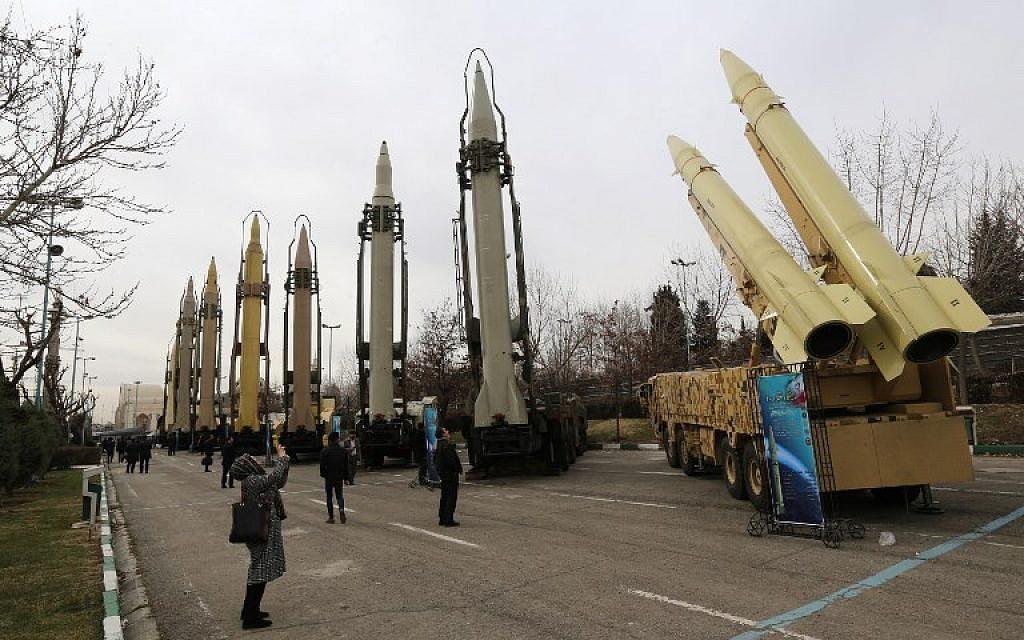
According to that report, a senior Iraqi source relayed of the US message: “They said if the U.S. were attacked on Iraqi soil, it would take action to defend itself without coordinating with Baghdad.”So the crisis appears focused on potential Iranian proxy actions in Iraq – apparently enough to take the very rare step of evacuating all non-emergency US personnel from the US embassy in Baghdad (a move that hadn’t even been done at the height of ISIS’ offensive across western and northern Iraqi).
However, US allies even disagree on this point. For starters, the deputy head of the US-led coalition, British Army Maj. Gen. Christopher Ghika, caused an almost unheard of row among allies when earlier this week he flatly stated: “No – there’s been no increased threat from Iranian-backed forces in Iraq and Syria,” in a videolink briefing at a Pentagon press conference.
Furthermore, Iraqi Prime Minister Adel Abdul Mahdi said on Tuesday that the Iraqis had no information showing “movements that constitute a threat to any side,” but added that his government “is doing its duty to protect all parties.”
So is the new “threat” which warranted the latest US military build-up, which has caused Iran’s military to warn “We are on the cusp of a full scale confrontation with the enemy” — all based on either Iran or Iran-backed “popular mobilization units” in Iraq moving around a few missiles? If so, it would be nothing new.
All the way back in August of last year we reported, based on Reuters, “Iran Stuns Enemies By Moving Ballistic Missiles To Iraq – Within Easy Striking Distance of Tel Aviv.” It was known at that time that Iran had transferred short-range ballistic missiles to Shia proxy forces in Iraq for “months” prior, according to Western and Iraqi intelligence sources. This is why a number of prominent Middle East watchers and military analysts have shrugged, “nothing new… nothing to see here” in response to the “new” vaunted White House intelligence. This also appears to be the attitude of Britain’s chain of command within the joint “Operation Inherent Resolve” coalition.
And enter the New York Times, which in a report published late Wednesday citing three defense officials, found that: “The intelligence that caused the White House to escalate its warnings about a threat from Iran came from photographs of missiles on small boats in the Persian Gulf that were put on board by Iranian paramilitary forces.”
And further, the report stated:
Overhead imagery showed fully assembled missiles, stoking fears that the Islamic Revolutionary Guards Corps would fire them at United States naval ships. Additional pieces of intelligence picked up threats against commercial shipping and potential attacks by Arab militias with Iran ties on American troops in Iraq.
The NYT also noted that some top lawmakers are seeking to ensure that Congress is consulted before taking any military action against Iran. Speaker Nancy Pelosi reportedly “criticized the administration’s lack of transparency on the intelligence” in a closed-door meeting involving House Democrats.
Pompeo’s latest statements presented in the earlier Fox report seems to confirm the new NYT report. US allies in the region have also reportedly dismissed the “satellite evidence” of the Iranians moving missiles as mere usual defensive posturing.
And then there’s the possibility that all of this bluster and heated war rhetoric and build-up could have merely originated from Iran’s moving or assembling missiles on their own soil or in their own territorial waters in the Persian Gulf.
Two More US Warships Travel To Persian Gulf As Tensions With Iran Escalate
In the latest provocation against Tehran by the US, two Navy destroyers have entered the Persian Gulf as the American military continues to add to its assets in the region to head off any planned ‘aggression’, USNI reports.
The USS McFaul and USS Gonzalez traveled through the Strait of Hormuz Thursday afternoon without being challenged by IRGC forces in the are. They join the USS Abraham Lincoln, which is stationed in the Gulf of Oman, as well as a strike force that includes several B-52 bombers, as the US continues to build up its military presence in the region. Another Aircraft Carrier, the USS Kearsarge, is anchored off the coast of the UAE.
According to USNI, if the US wanted to attack Iran from the water, its ships would be better off outside of the Persian Gulf, where it would be more difficult for Iranian missiles to reach them, and where they would be outside of Iran’s “domain awareness.”
The move comes after the US government has continued to warn about heightened threats from Iran. These fears have already prompted the evacuation of non-essential embassy personnel from the Baghdad embassy and the Erbil consulate.
Secret satellite photos of Iranian missiles on a small boat in the Gulf have helped ratchet up tensions, and the US has threatened to attack Iran if the regime starts stockpiling enriched uranium and heavy water again, as it has warned it would abandon the Iran deal if its European partners don’t make good on promises to buy Iranian oil and other financial considerations. CENTCOM has maintained that Iran is a ‘growing threat’ in the region.
An investigation into the source of attacks on two Saudi tankers that Iran is suspected of having orchestrated.
6.GLOBAL ISSUES
Canada/Mexico/USA
Canada and Mexico reach a deal with the USA as they both lift tariffs against each other
(courtesy zerohedge)
7 OIL ISSUES
8. EMERGING MARKETS
VENEZUELA
Your early morning currency/gold and silver pricing/Asian and European bourse movements/ and interest rate settings FRIDAY morning 7:00 AM….
Euro/USA 1.1168 DOWN .0006 REACTING TO MERKEL’S FAILED COALITION/ REACTING TO +GERMAN ELECTION WHERE ALT RIGHT PARTY ENTERS THE BUNDESTAG/ huge Deutsche bank problems ///ITALIAN CHAOS /AND NOW ECB TAPERING BOND PURCHASES/JAPAN TAPERING BOND PURCHASES /USA RISING INTEREST RATES /FLOODING/EUROPE BOURSES /RED
USA/JAPAN YEN 109.64 DOWN 0.240 (Abe’s new negative interest rate (NIRP), a total DISASTER/NOW TARGETS INTEREST RATE AT .11% AS IT WILL BUY UNLIMITED BONDS TO GETS TO THAT LEVEL…
GBP/USA 1.2757 DOWN 0.0039 (Brexit March 29/ 2019/ARTICLE 50 SIGNED/BREXIT FEES WILL BE CAPPED/BREXIT EXTENDED TO OCT 31/2019//
USA/CAN 1.3484 UP .0023 CANADA WORRIED ABOUT TRADE WITH THE USA WITH TRUMP ELECTION/ITALIAN EXIT AND GREXIT FROM EU/(TRUMP INITIATES LUMBER TARIFFS ON CANADA/CANADA HAS A HUGE HOUSEHOLD DEBT/GDP PROBLEM)
Early THIS FRIDAY morning in Europe, the Euro FELL BY 6 basis points, trading now ABOVE the important 1.08 level FALLING to 1.1168 Last night Shanghai COMPOSITE CLOSED DOWN 73.42 POINTS OR 2.48%
//Hang Sang CLOSED DOWN 328.61 POINTS OR 1.16%
/AUSTRALIA CLOSED UP .67%// EUROPEAN BOURSES RED
The NIKKEI: this FRIDAY morning CLOSED UP 187.11 POINTS OR 0.89%
Trading from Europe and Asia
EUROPEAN BOURSES ALL RED
2/ CHINESE BOURSES / :Hang Sang CLOSED DOWN 328.61 POINTS OR 1.16%
/SHANGHAI CLOSED DOWN 73.42 POINTS OR 2.48%
Australia BOURSE CLOSED UP .69%
Nikkei (Japan) CLOSED UP 187.11 POINTS OR 0.89%
INDIA’S SENSEX IN THE GREEN
Gold very early morning trading: 1285.30
silver:$14.48
Early FRIDAY morning USA 10 year bond yield: 2.38% !!! DOWN 2 IN POINTS from THURSDAY’S night in basis points and it is trading WELL ABOVE resistance at 2.27-2.32%.
The 30 yr bond yield 2.82 DOWN 2 IN BASIS POINTS from YESTERDAY night.
USA dollar index early FRIDAY morning: 97.89 UP 3 CENT(S) from THURSDAY’s close.
This ends early morning numbers FRIDAY MORNING
xxxxxxxxxxxxxxxxxxxxxxxxxxxxxxxxxxxxxxxxxxxxxxxxxxxxxxxxxxxxxxxxxxxxxxxxxxxxxxxxxxxxxxxxxxxxxxxxxxxxxxxxxxxxxxx
And now your closing FRIDAY NUMBERS \12: 00 PM
Portuguese 10 year bond yield: 1.08% DOWN 5 in basis point(s) yield from THURSDAY/
JAPANESE BOND YIELD: -.06% DOWN 1 BASIS POINTS from THURSDAY/JAPAN losing control of its yield curve/
SPANISH 10 YR BOND YIELD: 0.91% DOWN 4 IN basis point yield from THURSDAY
ITALIAN 10 YR BOND YIELD: 2.68 DOWN 7 POINTS in basis point yield from THURSDAY/
the Italian 10 yr bond yield is trading 177 points HIGHER than Spain.
GERMAN 10 YR BOND YIELD: FALLS –.10% IN BASIS POINTS ON THE DAY//
THE IMPORTANT SPREAD BETWEEN ITALIAN 10 YR BOND AND GERMAN 10 YEAR BOND IS 2.78% AND NOW ABOVE THE THE 3.00% LEVEL WHICH WILL IMPLODE THE ENTIRE ITALIAN BANKING SYSTEM. AT 4% SPREAD THERE WILL BE A HUGE BANK RUN…
END
IMPORTANT CURRENCY CLOSES FOR FRIDAY
Closing currency crosses for FRIDAY night/USA DOLLAR INDEX/USA 10 YR BOND YIELD/1:00 PM
Euro/USA 1.1178 DOWN .0029 or 29 basis points
USA/Japan: 109.86 UP .394 OR YEN DOWN 39 basis points/
Great Britain/USA 1.2800 DOWN .0046 POUND DOWN 46 BASIS POINTS)
Canadian dollar UP 7 basis points to 1.3435
xxxxxxxxxxxxxxxxxxxxxxxxxxxxxxxxxxxxxxxxxxxxxxxxxxxxxxxxxxxxxxxxxxxxxxxxxxxxxxxx
The USA/Yuan,CNY: AT 6.8837 0N SHORE (DOWN)..GETTING DANGEROUS
THE USA/YUAN OFFSHORE: 6.9166 (YUAN DOWN)..GETTING REALLY DANGEROUS
TURKISH LIRA: 56.0368 EXTREMELY DANGEROUS LEVEL/DEATH WISH.
the 10 yr Japanese bond yield closed at -.06%
Your closing 10 yr US bond yield UP 1 IN basis points from THURSDAY at 2.40 % //trading well ABOVE the resistance level of 2.27-2.32%) very problematic USA 30 yr bond yield: 2.84 UP 1 in basis points on the day
Your closing USA dollar index, 97.80 UP 23 CENT(S) ON THE DAY/1.00 PM/
Your closing bourses for Europe and the Dow along with the USA dollar index closing and interest rates for FRIDAY: 12:00 PM
London: CLOSED UP 56.56 0.78%
German Dax : CLOSED UP 210.80 POINTS OR 1.74%
Paris Cac CLOSED UP 73,85 POINTS OR 1.37%
Spain IBEX CLOSED UP 127.29 POINTS or 1.39%
Italian MIB: CLOSED DOWN 288,66 POINTS OR 1.38%
WTI Oil price; 63.36 12:00 PM EST
Brent Oil: 73.08 12:00 EST
USA /RUSSIAN / ROUBLE CROSS: 64.52 THE CROSS LOWER BY 0.14 ROUBLES/DOLLAR (ROUBLE HIGHER BY 14 BASIS PTS)
TODAY THE GERMAN YIELD FALLS TO –.10 FOR THE 10 YR BOND 1.00 PM EST EST
END
This ends the stock indices, oil price, currency crosses and interest rate closes for today 4:30 PM
Closing Price for Oil, 4:00 pm/and 10 year USA interest rate:
WTI CRUDE OIL PRICE 4:30 PM : 62.70
BRENT : 72.06
USA 10 YR BOND YIELD: … 2.39… VERY DEADLY//
USA 30 YR BOND YIELD: 2.82..VERY DEADLY/
EURO/USA 1.1161 ( DOWN 13 BASIS POINTS)
USA/JAPANESE YEN:109.98 UP .099 (YEN DOWN 10 BASIS POINTS/..
USA DOLLAR INDEX: 97.98 UP 13 cent(s)/
The British pound at 4 pm: Great Britain Pound/USA:1.2724 DOWN 70 POINTS
the Turkish lira close: 6.0537
the Russian rouble 64.76 down 0.15 Roubles against the uSA dollar.( DOWN 15 BASIS POINTS)
Canadian dollar: 1.3458 DOWN 5 BASIS pts
USA/CHINESE YUAN (CNY) : 6.9179 (ONSHORE)/we need to watch these levels/anything greater than 6.95 will be deadly./
USA/CHINESE YUAN(CNH): 6.9476 (OFFSHORE) we need to watch these levels/anything greater than 6.95 will be deadly/
German 10 yr bond yield at 5 pm: ,-0.10%
The Dow closed DOWN 98.68 POINTS OR 0.38%
NASDAQ closed DOWN 15.96 POINTS OR 0.67%
VOLATILITY INDEX: 15.96 CLOSED UP 0.67
LIBOR 3 MONTH DURATION: 2.525%//
FROM 2.524
And now your more important USA stories which will influence the price of gold/silver
TRADING IN GRAPH FORM FOR THE DAY/WEEKLY SUMMARY/FOLLOWED BY TODAY
Dow Suffers Worst Streak Since 2016 Despite Best Dip-Buying In A Decade
Quite a week…
China was ugly overnight after defending any dip all week – have to make sure the stock market does not reflect weakness after the trade deal fell apart!!
But Europe soared this week as US delayed auto tariffs…
China remains the best performer YTD, barely…
The late-day headlines from CNBC that “trade talks have stalled” – merely repeating what was said overnight numerous times – triggered the algos to dump after early gains (thanks to op-ex gamma hedging and US-Canada tariff headlines)…Small Caps were the week’s biggest laggard…
The Dow is down four weeks in a row – something it has not done since May 2016!!
The midweek ramp was all one big short-squeeze and the machines ran out of ammo today…
Another failed IPO today…
Trade deal hope was dashed this week…
The ratio between Morgan Stanley’s China Trade Sensitive Basket and the S&P 500 has dropped to the lowest since U.S. President Trump and Chinese President Xi announced a truce at the G-20 meeting in Argentina in December.
Credit ended the week wider (despite ripping back midweek from Monday’s gap wider)…VIX was around unch…
Stocks and bonds decoupled this week (as stocks short-squeezed higher midweek)…
Treasury yields were bid on the week and accelerated lower in the last hour as repeated headlines of trade talks being stalled sparked more bond buying…
10Y Yields fell back close to YTD lows this week
Notably crude and inflation breakevens decoupled late in the week…
The yield curve closed the week just above inversion…
But before we leave bond-land, both US and Europe priced in more dovishness from their respective central banks this week (41bps of cuts in 2019 for the Fed and 35bps of cuts for the ECB)…
The Dollar Index rose on the week – its best week in over 2 months…
The last two weeks have seen offshore yuan collapse over 3.1% getting closer to 7.00 – the biggest 2-week plunge since Aug 2015’s devaluation
Cable was a disaster this week with GBPEUR down 10 days in a row – the longest losing streak in 19 years
The Loonie rallied on the day after US dropped steel tariffs…
Cryptos had a violent week but ended significantly higher, led by a 33% rise in ethereum…
With Bitcoin reaching almost $8500 before crashing Friday…
The dramatic outperformance of Ethereum in the last few days has erased all of Bitcoin’s outperformance over the last 6 weeks…
WTI rallied on the week (copper did not) despite a strong dollar and trade talks breakdown but silver was the biggest loser…
Finally, in case you thought something had change in recent days – despite the collapsing fun-durr-mentals and the death of trade talks – you were right. Bloomberg’s Luke Kawa notes that over the past 10 sessions (or since the trade war resurfaced) the S&P 500 has averaged a drop of 0.5% overnight and a gain of 0.3% during the day. That 0.8 percentage point average gap over the two-week stretch constitutes the biggest disparity between poor overnight retreats and intraday advances since July 2009.
In other words, as the US-China trade deal began to collapse confidence in the markets, ‘someone’ was panic-buying US equities during the day after ‘someone else’ was dumping them overnight at historically high levels.
With global money supply now collapsing, stock markets are gonna need more dip-buying to support this debacle…
END
MARKET TRADING
Late in the afternoon: stocks tumble on CNBC reports that trade talks have stalled. Interestingly enough, the same report came in the early morning.
Stocks Tumble After CNBC Reports “Trade Talks Have Stalled”, Scheduling “In Flux”
Confirming that algos have a several millisecond memory at best, moments ago stocks slumped after CNBC reported…. what China’s press already reported some 18 hours ago.
As a reminder, and as we noted first thing this morning, the reason why futures slumped overnight is because Chinese officials turned up the trade war rhetoric, warning that there are no plans for another round of talks. Additionally, front page commentary in the Communist Party’s People’s Daily evoked the patriotic spirit of past wars, saying the trade war would never bring China down, while commentary on the blog Taoran Notes, which was carried by state-run Xinhua, accused the U.S. of “playing tricks to disrupt the atmosphere.”
The message was clear: no talks are scheduled, and more importantly, China has no urge to schedule talks in the immediate future or to engage the “barbarian” Trump.
However, for some bizarre reason, the market levitated for much of the day even though the China deal mood had soured substantially overnight, prompted by positive sentiment over the jump in fake consumer confidence, and Trump’s decision to end steel tariffs with Mexico and Canada (which he only did so he can focus on trade war with China).
And so, with exactly one hour in trading left, CNBC doubled down, reporting what traders already knew thanks to the latest round of belligerent Chinese rhetoric, namely that “negotiations between the US and China appear to have stalled as both sides dig in after disagreement earlier this month.” Additionally, CNBC also echoed what Chinese officials had already said, and citing two sources briefed on the status of the talks, said that scheduling for the next round of negotiations is “in flux” because it is unclear what the two sides would negotiate.
Finally, pointing out the obvious, CNBC notes that “China has not signaled it is willing to revisit past promises on which it reneged earlier this month, despite showing up for talks in Washington last week.”
The market reaction was instantaneous and negative, sending the S&P sharply lower… and yet prompting questions: why is the market sharply lower on “news” which everyone already knew? Perhaps the biggest question is just what idiot is the marginal price setter in a market in which nearly day-old news can hammer stocks not once but twice, and linked to that, just how dumb are the algos.
Here is the reaction in the S&P, which soared earlier just because Gartman turned short, and which has tumbled once more repeating the slow drift observed overnight in futures.
While the reaction was far less notable, even the Yuan responded, and dropped back to session lows, even though there was nothing new reported by CNBC.
But the most dramatic observation from the day’s violent reversal is that Gartman may actually be right…
end
ii)Market data/
The generally more accurate gauge of consumer confidence is the Bank of America survey as compared to the U. of Michigan report. Yesterday the U. of Michigan was bullish on confidence. Today’s B of America report was bearish.
(courtesy zerohedge)
SWAMP STORIES
Barr’s first interview with Bill Hammer: Government power was used to spy on American citizens states Barr.
(courtesy Fox news/BillHammer/Bill Barr)
In his first pair of interviews since being sworn in, Attorney General Barr told Fox News and WSJ that he was pursuing the investigation into the origins of the Trump-Russia probe – an investigation he has tasked John Durham, the US Attorney from Connecticut, with leading – because Americans need to know whether the government “put a thumb on the scale” to try and undermine President Trump both during the campaign and during the first two years of his term, just like “we need to ensure that foreign actors don’t influence the outcome of our elections.”
Separately, he told WSJ that “government power was used to spy on American citizens…I can’t imagine any world where we wouldn’t take a look and make sure that was done properly.”
Barr has doubled-down on using the term ‘spying’, which has angered Democrats, after first using it during Senate committee testimony from April 10, where he uttered the now-infamous phrase “I think spying did occur.”
The AG has declined to elaborate on what prompted these concerns, though he has said he’d be interested to see the underlying intelligence that sparked the FBI decision, in the summer of 2016, to open a counterintelligence investigation. At this point, Durham’s review isn’t a criminal investigation, and Barr hasn’t offered a timetable for when the investigation might be completed. Ultimately, the probe could lead to changing FBI protocols involving investigations into political campaigns.
Appearing to respond to Barr’s interviews, President Trump declared that his campaign was “conclusively” spied on.
As far as we know, the FBI first started investigating the campaign after an Australian ambassador told his superiors that George Papadopoulos had appeared to know about Russian plans to release ‘dirt’ on Hillary Clinton. The FBI later sent an informant, Stefan Halper, and a woman who identified herself as a research assistant, to meet with Papadopoulos and push him to say whether Russia was helping the Trump campaign.
Watch the Fox interview below:
This is good: Nellie Ohr deleted emails on Bruce Ohr’s computer while she was doing her research digging up dirt on Trump. So we have a non government employee destroy evidence on a government employee’s computer.. Sounds like obstruction of justice to me
(courtesy zerohedge)
SWAMP STORIES/KEY STORIES/KING REPORT
(COURTESY OF CHRIS POWELL OF GATA)
Attention Powell and dovish Fed dolts!!!
“It’s not just tariffs. Transportation costs are up, labor costs are up. It’s an inflationary environment,” Del Monte CEO Greg Longstreet told Reuters on the sidelines of a conference.“A lot of that’s going to have to be passed on.The consumer is going to have to pay more for a lot of critical goods.”
Credit card rates are now at their highest level in history and may weigh on the economy
Americans now pay their banks an average 17% interest on credit cards — the highest level recorded by the Fed… [Yet Fed Funds are 2.38%! Where are Dimon and other Street virtue signalers?]
If Fed officials and big-bank CEOs were really concerned about wealth disparity and average Americans, shouldn’t they do something about usuriously high credit card rates?
Sen. Josh Hawley (R-MO) on Senate floor Wednesday: “Big banks, big tech, big multi-national corporations, along with their allies in the academy and media — these are the aristocrats of our age. They live in the United States, but they consider themselves citizens of the world… The people who make the rules now, who run our large corporations, who set the tone for our popular culture, all belong to the same class. This economy has been their economy… The burden to protect the American people from forces parasitic on our national life and on our economy is on me and my colleagues. I take my responsibilities seriously…”[Populism on the left & right is proliferating.]
Meet the Senate’s new culture warrior…Hawley fashions a right-wing populism for the Trump era.
“Prescription drug prices have got to get lower,” he said… He sees a political realignment underway, accelerated by Trump… “Most people don’t want to live a life centered around high-priced wine and cheese and theater tickets and so on. They don’t want to start a tech company… They want to have a life centered around their school and their church, and we need a politics that recognizes that, respects that and makes that way of life possible… the great American middle, the middle of our society… has defined our common citizenship…
We’ve got to get technology and innovation that actually produce something of value to our economy and our society and doesn’t drain away value from the great middle of our society.”…
The media, Hollywood and academia relentlessly press their values and priorities on the rest of us. … They idealize fame and preach self-realization through consuming more stuff. … That has produced, predictably, a good deal of dislocation and alienation and rightly so…
Ex-FBI General Council, James Baker, is suddenly all over the media spinning his actions.
Mike Isikoff, the reporter that broke dossier story: Top FBI officials were ‘quite worried’ Comey would appear to be blackmailing Trump – when he attended a fateful Jan. 6, 2017, meeting at which he informed the real estate magnate about allegations he had consorted with prostitutes in Moscow, according to Jim Baker, the bureau’s chief counsel at the time…
Ex-top FBI lawyer James Baker: We took Trump dossier ‘seriously’ but ‘not necessarily literally’
And did not treat it as “literally true in every respect.”… [Why was it used to obtain a FISA warrant?!]
@ByronYork: If you’re interviewing James Baker, please consider asking: 1) Carter Page met secretly with Igor Sechin: Is that true? 2) Page met secretly with Igor Divyekin: Is that true? 3) Carter Page is a Russian agent: Is that true? All assertions in (now public) FISA application.
“Spygate” Fallout? Italian Prime Minister Conté Requests Resignation of Intelligence Officials…
@GeorgePapa19: The Italian prime minister has suddenly requested resignations from 6 deputy directors of Italian intelligence agencies: DIS, AISI and AISE. This was all after I outed Mifsud in Rome and the president called the Italian prime minister. Italy has flipped and are giving up Brennan.
Solomon: Ukrainian who meddled against Trump in 2016 is now under Russia-corruption cloud
Sworn testimony released a few weeks ago by Congress revealed Leshchenko also was “a source” of Russian dirt on Trump that was fed to Hillary Clinton’s opposition research firm, Fusion GPS, the firm that created the so-called Steele dossier that led to a two-year Russia probe…
The special prosecutor said “credible” information obtained from news media reports, as well as classified information the government possesses, suggest Leshchenko was receiving money from a Russian businessman and was trying to buy the condo in August and September 2016…
Ukrainian officials told me Thursday that the U.S. embassy during Barack Obama’s presidency applied pressure in recent years to steer investigations away from Leshchenko. A source with direct knowledge said Leshchenko was one of the people the U.S. ambassador in Kiev asked Ukrainian prosecutors not to pursue in 2016… Lutsenko told Bloomberg,,, he’d like to offer evidence to U.S. Attorney General Barr, so that American authorities can check whether Hunter Biden paid U.S. taxes.
Kasich adviser will lobby against potential Russia sanctions
John Weaver, the top strategist for John Kasich’s presidential campaign in 2016, has registered as a foreign agent and plans to lobby against potential sanctions on Russia… Weaver is also a former adviser to John McCain’s presidential campaigns…
https://www.politico.com/story/2019/05/15/lobbying-against-russia-sanctions-weaver-kasich-1327880
@ScottMGreer: This is peak GOP campaign consultant behavior. Weaver is a horrible Never Trumper who insisted Trump and the GOP were controlled by Putin. Now he’s getting Kremlin checks.
SAT to Give Students ‘Adversity Score’ to Capture Social and Economic Background
New score comes as college admissions decisions are under scrutiny [Let the lawsuits begin!]
This new number, called an adversity score by college admissions officers, is calculated using 15 factors including the crime rate and poverty levels from the student’s high school and neighborhood. Students won’t be told the scores, but colleges will see the numbers when reviewing their applications.
Let us wrap up the week with this offering courtesy of Greg Hunter of USAWatchdog
(courtesy Greg Hunter/USAWatchdog)





